Preschool Toys
What Toys to Avoid With Preschool Age Children
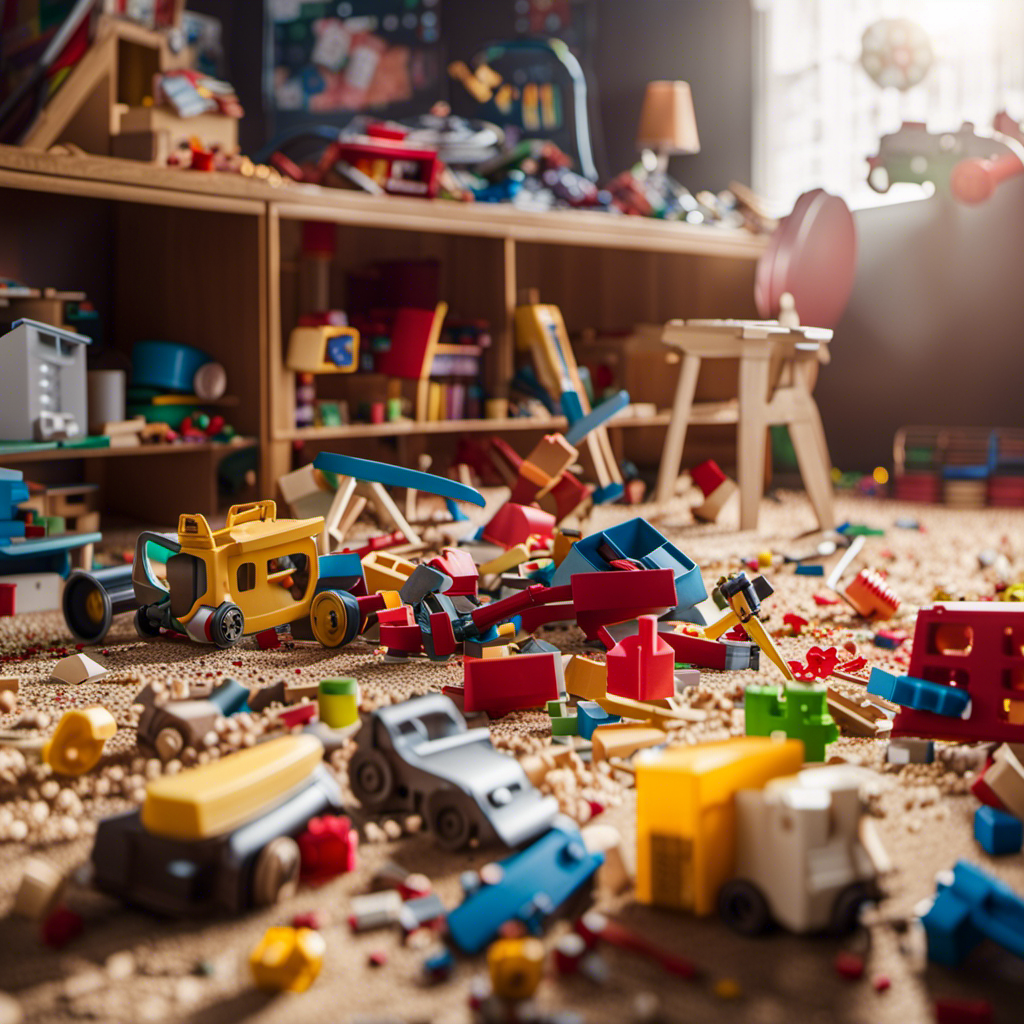
As a parent, I recognize the vital significance of choosing toys that are safe and appropriate for my preschool-aged child. The wide range of options on the market can make it difficult to navigate. That’s why I aim to share my expertise to help you make informed decisions.
In this article, I will discuss the toys that you should avoid when it comes to preschoolers. From choking hazards to toxic materials, I will provide you with detailed information to ensure your child’s safety.
Let’s dive in and learn what toys to steer clear of!
Key Takeaways
- Avoid small toys or objects that can be swallowed
- Choose toys made from safe and non-toxic materials
- Select toys with soft and rounded edges
- Be cautious of strings, cords, and batteries
Choking Hazards
Make sure to steer clear of any small toys or objects that could pose a choking hazard for preschool age children. When it comes to age appropriate toy selection, safety should always be a top priority. Preschoolers have a tendency to explore and put objects in their mouths, so it is crucial to provide them with toys that are specifically designed for their age group.
One major safety hazard to be aware of is batteries. Many toys nowadays come with small button batteries that can easily be swallowed by young children. If ingested, these batteries can cause serious injuries, such as burns or even death. It is important to always check the battery compartments of toys and ensure they are securely closed. Additionally, be cautious of toys that have loose or easily removable parts that could become choking hazards.
Transitioning into the next section about ‘toxic materials,’ it is important to not only consider the size of the toy but also the materials it is made from. Some toys may contain toxic substances such as lead or phthalates, which can be harmful if ingested or absorbed through the skin. It is crucial to read labels and choose toys that are made from safe and non-toxic materials.
Toxic Materials
There’s a risk of exposing young kids to toxic materials when playing with certain toys. One of the biggest concerns in recent years has been toy recalls due to lead poisoning. Lead is a highly toxic metal that can cause serious health problems, especially in children. It can affect their brain development, leading to learning disabilities, behavior problems, and even death in extreme cases.
Toy recalls happen when a product is found to have exceeded the acceptable levels of lead. These recalls serve as a reminder to parents and caregivers to be vigilant when choosing toys for their children. It’s essential to carefully read labels and look for toys that are labeled as lead-free or have undergone thorough testing for safety.
In addition to lead, other toxic materials like phthalates, bisphenol A (BPA), and formaldehyde have also been found in some toys. These chemicals can have harmful effects on children’s health, including hormone disruption, respiratory issues, and even cancer.
To ensure the safety of our children, it’s crucial to stay informed about toy recalls and choose toys that adhere to safety standards.
In the next section, we’ll discuss another important aspect to consider when selecting toys for preschool age children: small parts.
Small Parts
When selecting toys, it’s important to be aware of small parts that could pose a choking hazard. As a parent, I understand the importance of keeping my preschool-age child safe while still providing them with fun and engaging toys. Here are a few things to keep in mind when it comes to small parts and choking hazards:
-
Age-appropriate toys: Always check the recommended age range on the packaging of the toy. This will give you a good indication of whether the toy contains small parts that could be dangerous for your child.
-
Inspect for small parts: Before giving a toy to your child, take a close look at it. Look for any small detachable parts that could easily come off and be swallowed. If you find any, remove them or choose a different toy.
-
Consider the size: Even if a toy doesn’t have small parts, be mindful of the overall size. Toys that are too small can still pose a choking hazard, especially for younger children who tend to put things in their mouths.
Transitioning to the next section about ‘sharp edges’, it’s also important to be aware of potential hazards beyond choking.
Sharp Edges
When it comes to selecting toys for children, safety should always be a top priority. Understanding and following safety standards for toys is crucial to ensure that the toys we choose are free from any potential hazards.
Age-appropriate toy selection is also important, as it helps to ensure that the toys are suitable for a child’s developmental stage and abilities.
Additionally, toys with soft and rounded edges are recommended to minimize the risk of injuries, especially for younger children who are more prone to accidents.
Safety Standards for Toys
To ensure the safety of your preschool age children, it is important to choose toys that meet the necessary safety standards. Toy manufacturing regulations are in place to ensure that toys are designed and manufactured with safety in mind. These regulations cover aspects such as the use of non-toxic materials, absence of sharp edges, and proper construction.
When purchasing toys for your preschoolers, it is important to check for labels or markings that indicate compliance with these regulations. This will give you peace of mind knowing that the toys you are buying have met the necessary safety standards.
However, even if a toy meets all safety standards, accidents can still occur. That’s why supervision plays a crucial role in ensuring the safety of your children while playing with toys. It is important to always keep a watchful eye on your child during playtime.
Now, let’s move on to the next section and discuss the importance of selecting age-appropriate toys for your preschool age children.
Age-Appropriate Toy Selection
It’s important to choose toys that are appropriate for your child’s developmental stage. Ensuring that the toys you provide are suitable for their age can greatly enhance their growth and learning. Here are some key considerations for age-appropriate toy selection:
-
Safety: Look for toys that meet safety standards and have passed rigorous testing to ensure they are free from harmful chemicals and choking hazards.
-
Cognitive Development: Toys that encourage problem-solving, creativity, and imagination are ideal for preschool-age children.
-
Physical Development: Choose toys that promote fine motor skills, hand-eye coordination, and balance, such as building blocks or puzzles.
-
Social Skills: Toys that foster cooperation, sharing, and communication can help children develop important social skills.
When selecting age-appropriate toys, be sure to consider reputable brands that specialize in creating educational and engaging toys for children of different age groups.
Now, let’s explore the importance of toys with soft and rounded edges.
Soft and Rounded Edges
Soft and rounded edges are important for ensuring the safety of young kids while playing with toys. Childproofing is essential to protect children from potential hazards, and one way to do this is by selecting toys with soft and rounded edges. These types of toys minimize the risk of injuries, such as cuts or bruises, especially for preschool age children who are still developing their motor skills.
However, even with childproofing measures in place, supervision is crucial when children are playing with toys. Parents and caregivers should always keep a watchful eye to ensure that children are using toys appropriately and safely. By providing a safe environment and close supervision, we can help prevent accidents and promote a positive play experience for children.
Speaking of safety, let’s now move on to discussing the potential dangers associated with strings and cords.
Strings and Cords
Strings and cords can pose a choking hazard for preschool age children. It is essential to ensure that play materials and toys for this age group are safe and free from any potential risks. Here are some important points to consider when it comes to strings and cords:
-
Tangle free options: Look for toys that have tangle-free strings or cords. This reduces the risk of entanglement and strangulation accidents.
-
Alternative play materials: Instead of toys with strings or cords, consider alternatives such as cloth or fabric toys, which are safer for young children. These toys provide tactile stimulation and encourage imaginative play without the risk of choking or strangulation.
-
Supervision: Even with tangle-free options, it is crucial to supervise young children while they play with any toys that have strings or cords. This ensures their safety and allows you to intervene if any potential hazards arise.
-
Regular checks: Regularly inspect toys for any signs of wear and tear, especially in the strings or cords. If you notice any fraying or damage, it is essential to replace the toy or repair it promptly to avoid any accidents.
When it comes to toy safety, strings and cords are just one aspect to consider. Another important area of concern is batteries and electrical toys, which I will discuss in the next section.
Batteries and Electrical Toys
As a parent, it is important to be aware of the safety hazards posed by batteries and electrical toys.
Batteries can be a choking hazard if swallowed, and can also cause burns or chemical injuries if mishandled.
When choosing electrical toys, it is crucial to consider the age appropriateness and ensure that they are suitable for your child’s developmental stage to minimize the risk of accidents or injuries.
Safety Hazards of Batteries
Make sure you don’t let your preschooler play with toys that have loose or easily removable batteries, as they can be a safety hazard. Here are four reasons why these batteries can pose potential fire hazards and the importance of proper battery storage:
-
Choking Hazard: Loose batteries are small and can easily be swallowed by curious preschoolers, leading to choking incidents.
-
Short Circuit: If a loose battery comes into contact with metal objects, it can create a short circuit, potentially causing sparks or even a fire.
-
Chemical Leakage: Damaged batteries can leak corrosive chemicals, which can be harmful if ingested or come into contact with the skin.
-
Battery Overheating: Improperly stored or loose batteries can overheat, leading to a fire risk.
Ensuring proper battery storage, such as keeping batteries in a secure container, can greatly reduce these safety risks.
Now, let’s move on to age-appropriate electrical toys.
Age-Appropriate Electrical Toys
Now that we understand the safety hazards of batteries, let’s talk about age-appropriate electrical toys for preschoolers.
It’s important to choose toys that are suitable for their age and developmental stage. Age-appropriate battery-operated toys are designed with safety in mind, ensuring that the electrical components are securely enclosed and inaccessible to little hands. These toys often have larger buttons or switches that are easy for preschoolers to operate.
When selecting these toys, it’s crucial to look for the age recommendation on the packaging to ensure it aligns with your child’s abilities and understanding. Additionally, always supervise your child while they play with electrical toys to prevent any accidents.
Now that we’ve covered electrical safety, let’s move on to another potential hazard: choking risks.
Potential Choking Risks
Always be mindful of small objects that could pose a choking hazard to your little ones. When it comes to toys, safety should always be a top priority. One important aspect to consider is the presence of toxic materials in toys. It is crucial to ensure that the toys your child plays with are free from harmful substances such as lead or phthalates. Look for toys that meet safety standards, such as those labeled with the ASTM F963 symbol, indicating compliance with federal regulations.
Additionally, be cautious of toys with small parts that could easily detach and become a choking hazard. Always double-check the age appropriateness of toys and supervise playtime to prevent accidents.
Now, let’s move on to another potential hazard: projectile toys.
Projectile Toys
Avoid giving your preschooler projectile toys like dart guns or slingshots. These toys may seem fun and exciting, but they can pose a risk of injury to young children. Instead, consider alternative toys that promote safe play and creativity. One great alternative is foam ball launchers. These toys allow children to engage in active play without the risk of injury. Foam ball launchers are designed with safety in mind. The balls are soft and lightweight, reducing the chances of accidents. Another option is frisbees or soft flying discs. These toys can be thrown and caught, encouraging hand-eye coordination and gross motor skills development.
When it comes to safe play guidelines, it’s important to supervise your child during playtime. Teach them to never aim the toys at people or animals, and to always play in an open area away from breakable objects. Additionally, make sure to set boundaries and establish clear rules for safe play. By following these guidelines, you can ensure that your child has a fun and safe play experience.
Now, let’s move on to the next topic: toys with loud noises.
Toys With Loud Noises
When playing with toys that produce loud noises, it’s important to consider the impact on your child’s hearing. Excessive exposure to loud noises can lead to hearing loss or damage in young children. As a parent, it is crucial to choose toys that prioritize your child’s safety and well-being.
Toys that produce loud noises can be exciting for children, but it’s important to find a balance between fun and safety. Here is a table that highlights the potential risks and precautions associated with toys that produce loud noises:
| Risk | Precautions |
|---|---|
| Hearing damage | Limit the amount of time your child spends playing with these toys. Use ear protection, such as earmuffs or earplugs. |
| Disturbance | Consider the noise level in your home and the impact on others. Choose toys with adjustable volume settings. |
| Startling effect | Introduce these toys gradually to help your child adjust to the loud noises. Monitor their reaction and provide reassurance if needed. |
It’s also important to be aware of choking hazards associated with toys that produce loud noises. Ensure that the toys are age-appropriate and do not contain small parts that could be swallowed or inhaled.
Transitioning into the subsequent section about toys with complex assembly, it’s crucial to consider the safety aspects and age appropriateness when choosing toys for your child.
Toys With Complex Assembly
To ensure a successful assembly experience, it’s important for you to carefully follow the instructions provided with toys that have complex assembly.
These toys can provide hours of fun and learning for your child, but they also come with potential choking risks if not assembled correctly.
Here are some important points to keep in mind when dealing with toys that require complex assembly:
-
Read the instructions thoroughly: Take the time to read through the instructions before starting the assembly process. This will give you a better understanding of the steps involved and any safety precautions that need to be taken.
-
Use the right tools: Make sure you have all the necessary tools before starting the assembly. Using the wrong tools can lead to improper assembly and potential hazards.
-
Check for loose parts: Before giving the toy to your child, double-check that all parts are securely attached. Loose parts can pose a choking risk, so it’s essential to ensure everything is properly secured.
-
Store small parts safely: If the toy contains small parts that are not meant for children under a certain age, make sure to store them safely out of reach when the toy is not in use.
-
Regularly inspect the toy: As your child plays with the toy, regularly inspect it for any loose or damaged parts. Repair or replace any damaged components to maintain the toy’s safety.
Frequently Asked Questions
Are There Any Specific Toys That Are Recommended for Preschool Age Children?
When it comes to toys for preschool age children, there are definitely some recommendations.
Sensory toys, like playdough or textured balls, can help with their development and exploration.
Creative and imaginative play toys, such as building blocks or dress-up costumes, encourage their creativity and problem-solving skills.
These types of toys provide a lot of benefits to preschoolers.
They can enhance their cognitive abilities, fine motor skills, and social interactions.
It’s important to choose toys that are age-appropriate and safe for them to play with.
How Can I Ensure the Toys I Purchase for My Preschooler Are Safe?
To ensure the toys I purchase for my preschooler are safe, I need to be proactive in checking for toy recalls. I can do this by regularly visiting the Consumer Product Safety Commission’s website or signing up for their email notifications.
Additionally, it’s important to choose age-appropriate toys that match my child’s developmental abilities. I can refer to the recommended age range on the packaging or consult the toy’s manufacturer for further guidance.
Are There Any Specific Warning Signs to Look Out for When Buying Toys for Preschoolers?
When buying toys for preschoolers, it’s crucial to be aware of warning signs that indicate potential safety issues. Look out for small parts that could be choking hazards, sharp edges that could cause injuries, and toxic materials that could be harmful if ingested.
It’s important to ensure toy safety by checking for age-appropriate labels, reading product reviews, and inspecting toys for any potential hazards. By being cautious and informed, you can make sure your preschooler’s playtime is both fun and safe.
Are There Any Safety Regulations or Standards That Toys for Preschoolers Must Meet?
Safety regulations and toy standards are crucial when it comes to toys for preschoolers. These regulations ensure that toys are designed and manufactured with the safety of young children in mind. They cover aspects such as the use of non-toxic materials, durability, and size to prevent choking hazards.
Compliance with these regulations is important to ensure that the toys we give to preschoolers are safe and suitable for their age group.
What Should I Do if I Suspect a Toy My Preschooler Is Playing With Is Unsafe?
If I suspect a toy my preschooler is playing with is unsafe, there are a few steps I can take.
First, I should remove the toy from their reach immediately.
Then, I should carefully inspect the toy for any potential hazards or defects.
If I find any safety concerns, I should report them to the appropriate authorities or the toy manufacturer.
Additionally, I can educate my preschooler about toy safety by teaching them to avoid putting small objects in their mouths and to play with toys in a safe and responsible manner.
Conclusion
In conclusion, when it comes to choosing toys for preschool age children, it’s crucial to prioritize their safety. Avoiding toys with choking hazards, toxic materials, small parts, sharp edges, strings and cords, batteries and electrical components, projectile toys, toys with loud noises, and toys with complex assembly is essential.
Just like a wise captain steering a ship through treacherous waters, we must navigate the toy aisle with caution. Ensuring that our little ones are protected from any potential harm.
Tina is the heart and soul behind Toddler Ride On Toys. With a passion for early childhood education and a deep understanding of child development, Tina ensures that every piece of content on our website reflects our commitment to playful learning. Her expertise in Montessori, Preschool, STEM, and Waldorf education philosophies helps shape our website into a valuable resource for parents, caregivers, and educators.
Preschool Toys
How to Choose Safe Outdoor Play Equipment for Preschool

We recognize the importance of protecting our children while they explore and play. With so many options available, choosing the right outdoor play equipment for preschoolers can feel overwhelming. But don’t worry, we’re here to guide you through this process.
In this article, we’ll walk you through the process of selecting age-appropriate equipment, checking for safety features, considering materials and durability, and finding the perfect space and location.
Get ready to create a fun and secure outdoor play environment for your preschoolers!
Key Takeaways
- Conduct a thorough risk assessment to determine the suitability of the equipment.
- Select equipment with impact-resistant materials and secure anchoring to prevent injuries.
- Choose materials that are durable, non-toxic, and eco-friendly.
- Prioritize regular maintenance and inspections to ensure safety and longevity of the equipment.
Age-Appropriate Equipment
We will discuss the importance of selecting age-appropriate equipment for preschool outdoor play.
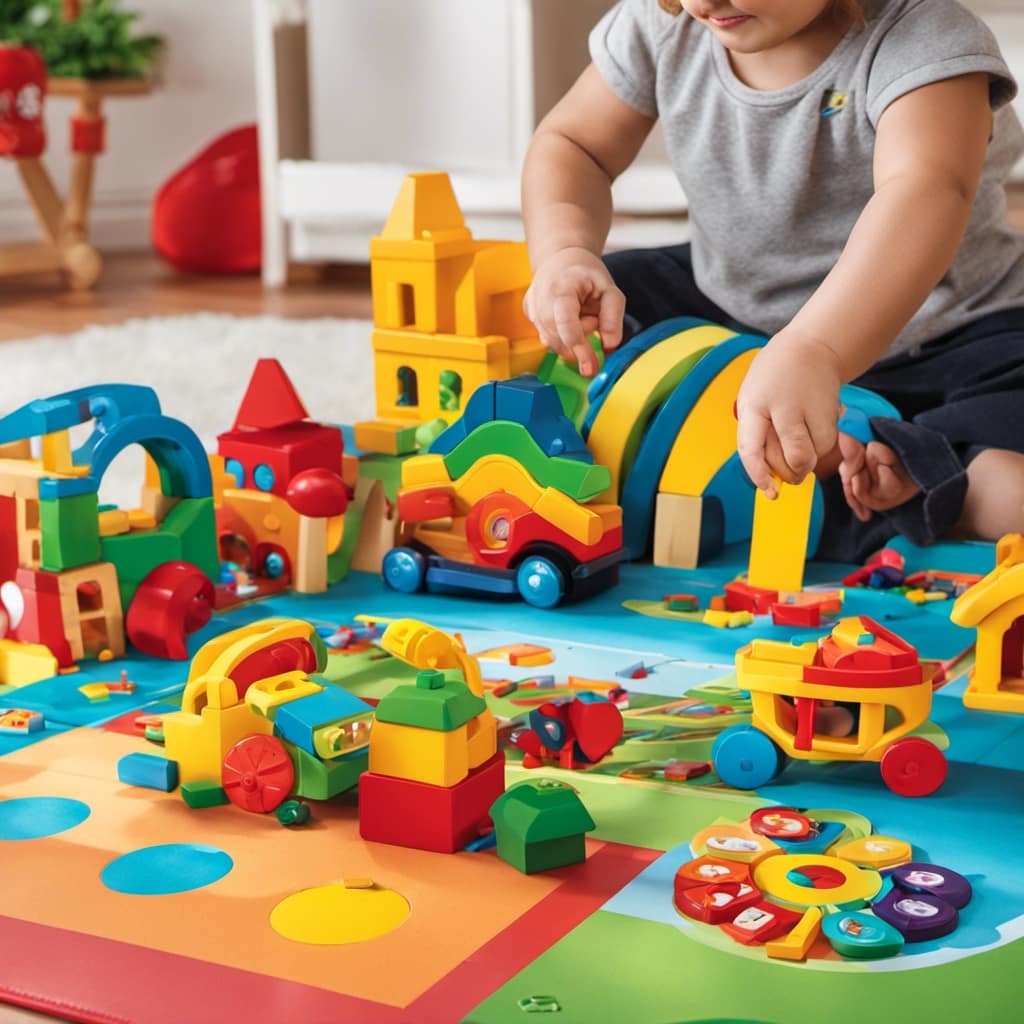
When it comes to outdoor play, ensuring that the equipment aligns with the age group is crucial for the safety and development of preschool children. Conducting a thorough risk assessment is the first step in determining the suitability of the equipment. This assessment should consider factors such as the height, stability, and potential hazards of the equipment.
Additionally, supervision requirements must be taken into account to ensure the safety of the children during playtime. The equipment should be easily visible and accessible for the supervisors to effectively monitor the children.
Safety Features to Look for
When selecting outdoor play equipment for preschool, it’s important to regularly inspect and maintain the safety features. Here are three key safety features to look for:
-
Impact resistance: Choose equipment that’s designed to withstand the impact of active play. Look for materials that are durable and can absorb shock, such as rubberized surfaces or foam padding. This will help minimize the risk of injuries from falls or collisions.

-
Secure anchoring: Ensure that the play equipment is securely anchored to the ground. Look for equipment that has proper anchoring systems, such as buried posts or concrete footings. This will prevent the equipment from tipping over or moving during play, reducing the risk of accidents.
-
Protective barriers: Check if the equipment has appropriate protective barriers in place. For example, slides should have high sides or guardrails to prevent children from falling off. Swings should have sturdy seats and chains with adequate spacing to prevent entanglement.
Material Selection
To choose the appropriate materials for outdoor play equipment in a preschool setting, it’s crucial to consider their durability and safety features. In addition to these factors, it’s important to also take into account the environmental impact and cost effectiveness of the materials.
When it comes to environmental impact, it’s best to opt for materials that are eco-friendly and sustainable. Look for equipment made from recycled materials or those that can be easily recycled at the end of their lifespan. This not only reduces waste but also teaches children about the importance of sustainability.

Cost effectiveness is another important consideration. While high-quality materials may come with a higher upfront cost, they tend to be more durable and require less maintenance, making them a better long-term investment.
It’s important to strike a balance between environmental impact and cost effectiveness when selecting materials for outdoor play equipment in a preschool setting.
Maintenance and Durability
Considering the importance of maintaining safe outdoor play equipment in a preschool setting, it’s essential to prioritize durability and regular upkeep. By ensuring that the equipment is well-maintained, you can extend its lifespan and provide a safe and enjoyable environment for the children.
Here are three key factors to consider when it comes to maintenance and durability:
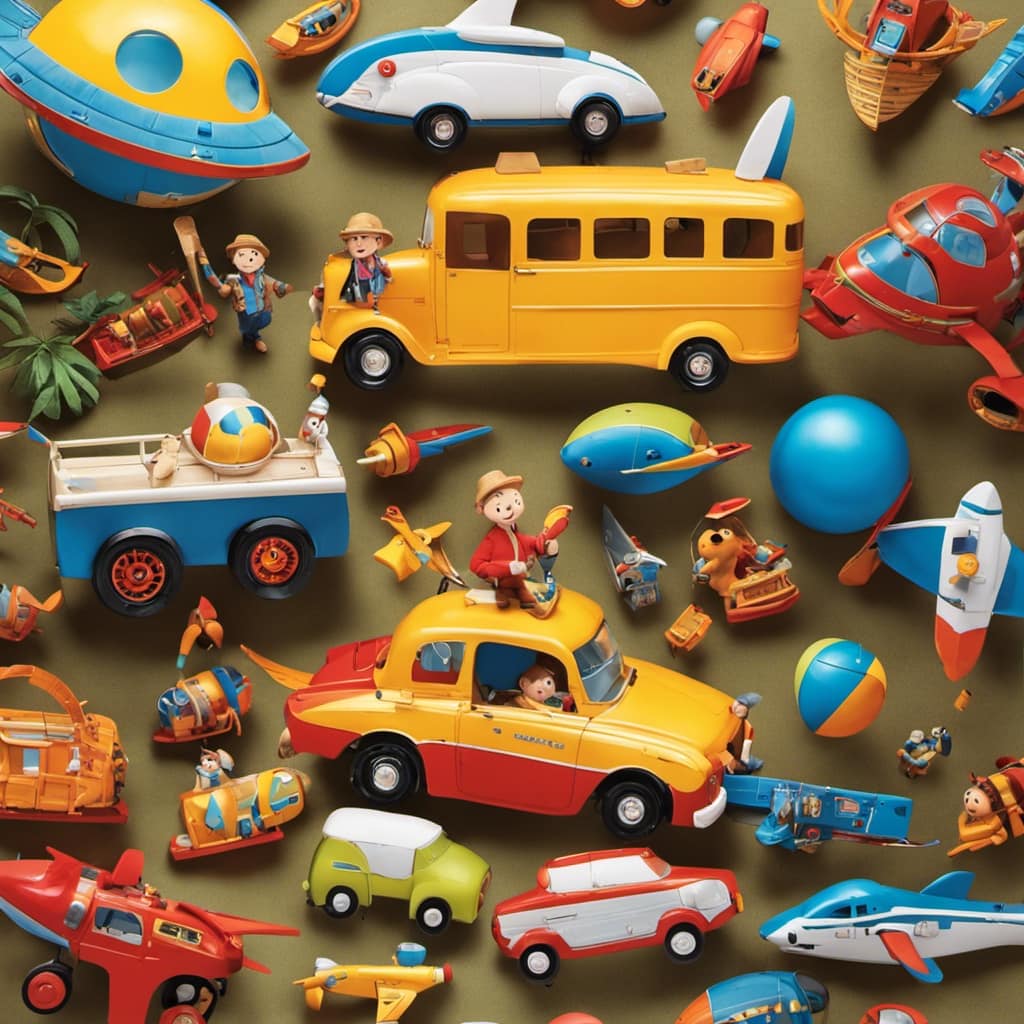
-
Quality Materials: Opt for play equipment made from durable materials such as stainless steel or high-density polyethylene. These materials are resistant to rust, corrosion, and fading, making them ideal for long-term use.
-
Regular Inspections: Conduct regular inspections to identify any signs of wear and tear, such as loose bolts, cracked surfaces, or frayed ropes. Addressing these issues promptly can prevent accidents and prolong the life of the equipment.
-
Proper Cleaning: Develop a cleaning schedule and use appropriate cleaning products to remove dirt, debris, and germs from the equipment. Regular cleaning not only maintains the aesthetics but also ensures the safety and hygiene of the children.
Investing in high-quality, well-maintained outdoor play equipment is a long-term investment that promotes the safety and development of the children in your preschool. Regular inspections and proper maintenance will help ensure that the equipment remains in top condition for years to come.
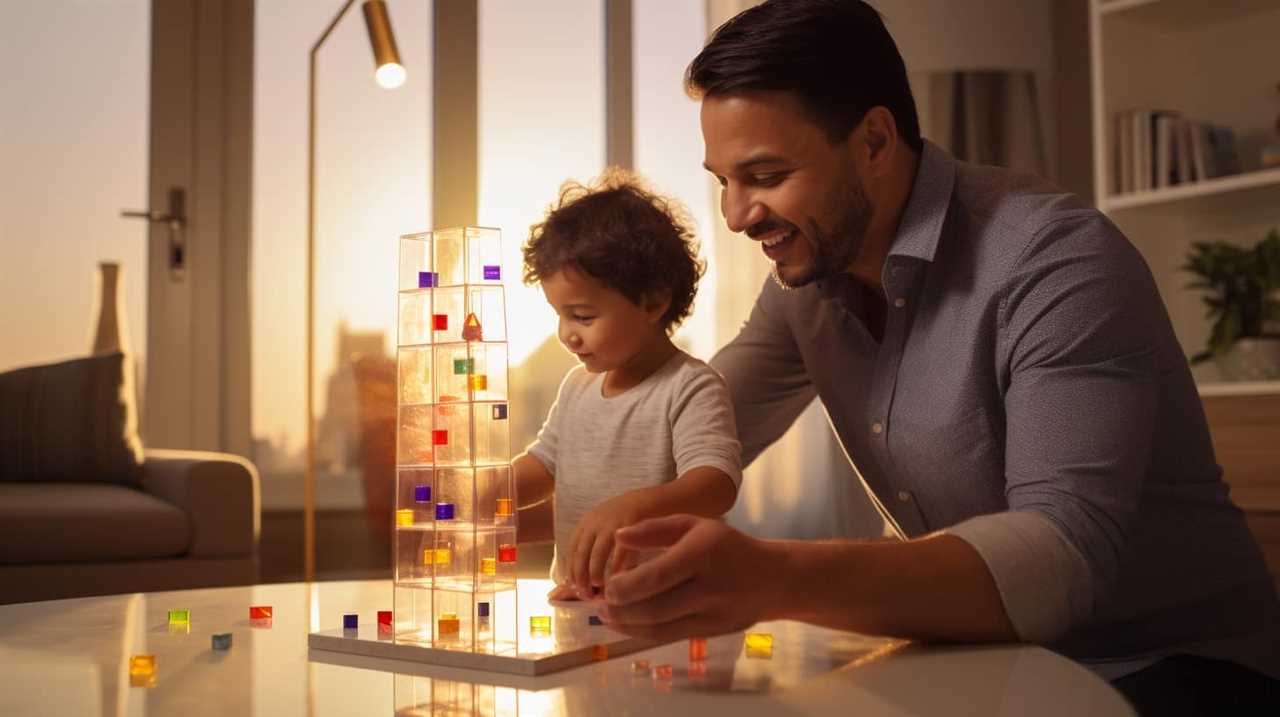
Consideration of Space and Location
Now, let’s delve into the important aspect of selecting outdoor play equipment for preschool – considering the available space and the ideal location for installation.
When choosing play equipment, it’s essential to consider the supervision requirements and accessibility considerations.
First, consider the supervision requirements. Ensure that the play equipment can be easily monitored by teachers or caregivers. Opt for equipment that allows for clear sightlines, minimizing blind spots where children could potentially get injured without immediate adult intervention. Additionally, consider the layout of the play area and how it can be organized to facilitate effective supervision.
Second, think about accessibility considerations. Ensure that the play equipment is accessible to all children, including those with disabilities or limited mobility. Choose equipment with ramps, handrails, and wide pathways to accommodate children with wheelchairs or other assistive devices. Additionally, consider the distance between the equipment and other structures to allow for easy movement and inclusion.
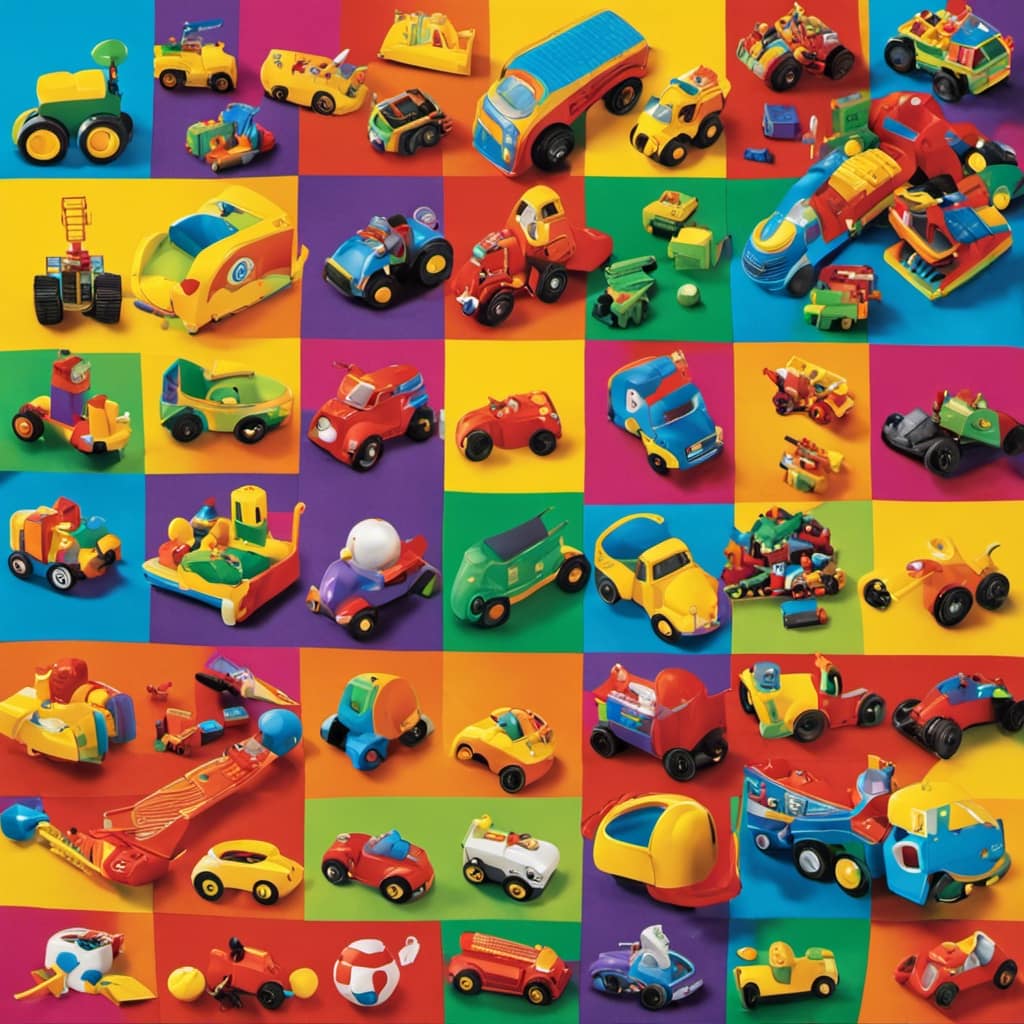
Frequently Asked Questions
Are There Any Specific Guidelines or Regulations for Outdoor Play Equipment in Preschools?
There are specific guidelines and regulations for outdoor play equipment in preschools to ensure safety. Supervision is important in outdoor play areas, and incorporating nature into outdoor play spaces has many benefits.
What Are Some Common Safety Hazards to Watch Out for in Outdoor Play Equipment?
When choosing outdoor play equipment for preschool, it’s important to be aware of common safety hazards like sharp edges and unstable structures. We should also consider guidelines and regulations, such as age appropriateness and adherence to ASTM standards.
Can Outdoor Play Equipment Be Customized or Modified to Meet Specific Safety Requirements?
Yes, outdoor play equipment can be customized or modified to meet specific safety requirements. There are various customization options available, such as adding safety features or adjusting equipment height, ensuring a safe and enjoyable play experience for preschool children.
How Often Should Outdoor Play Equipment Be Inspected for Maintenance and Repairs?
Regular equipment maintenance offers numerous benefits, such as prolonging the lifespan of outdoor play equipment and ensuring the safety of preschoolers. By inspecting for signs of wear and tear, we can identify potential hazards and address them promptly.
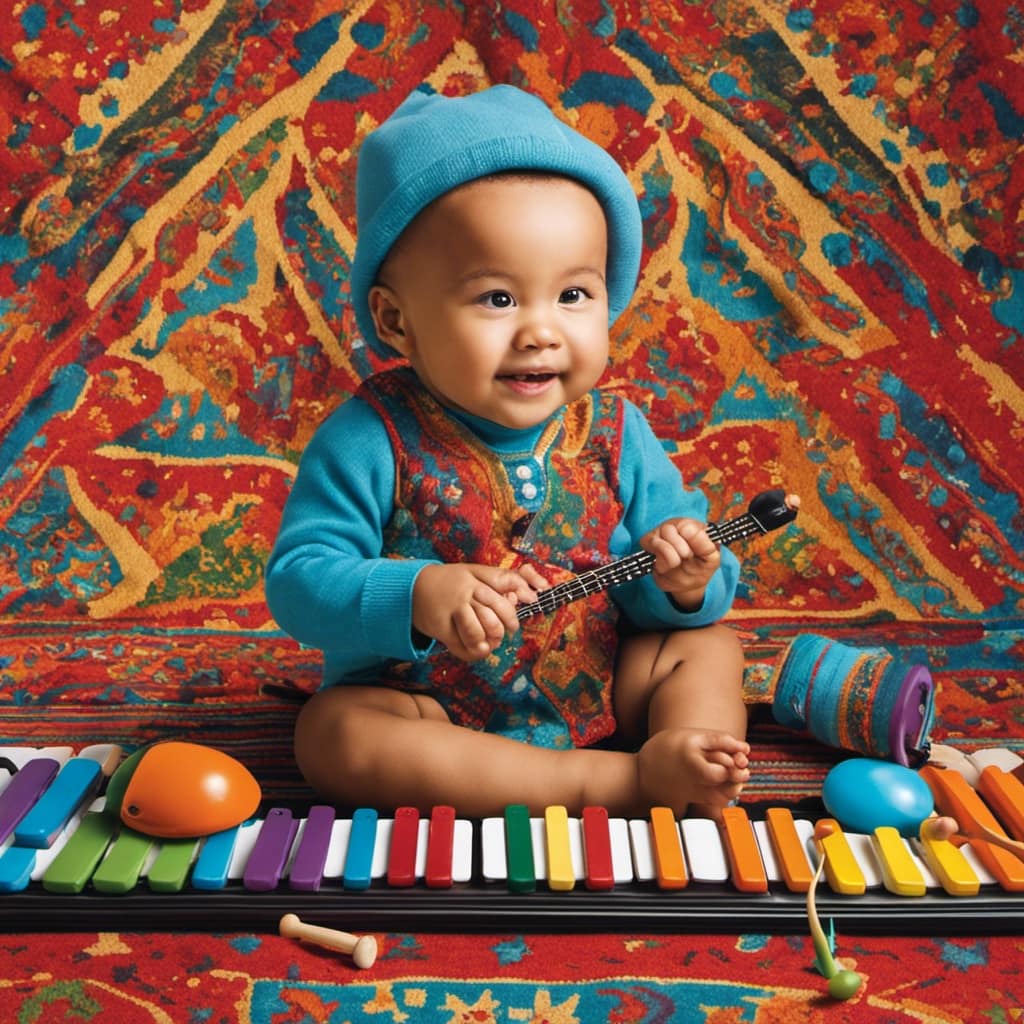
What Is the Ideal Ratio of Outdoor Play Equipment to the Number of Children in a Preschool?
When it comes to the ideal ratio of outdoor play equipment to the number of children in a preschool, safety should be a top priority. It’s important to ensure that there is enough equipment to accommodate all the children and promote their physical and cognitive development. Additionally, outdoor play offers numerous benefits, such as improved gross motor skills, social interaction, and creativity.
Conclusion
In conclusion, when it comes to selecting safe outdoor play equipment for preschool, it’s crucial to prioritize age-appropriate options and consider safety features.
Additionally, carefully choose materials that are durable and require minimal maintenance.
Lastly, take into account the space and location to ensure the equipment fits well and promotes a safe and enjoyable play environment.

By following these guidelines, we can create a secure and engaging outdoor play area for our little ones.
Mila, a gifted writer with a heart brimming with enthusiasm for child development and playful learning, is the creative force behind the enchanting narratives and insightful articles that grace Toddler Ride On Toys. With a background in early childhood education and a genuine passion for nurturing young minds, Mila weaves words that captivate, educate, and inspire parents, caregivers, and educators.
Preschool Toys
6 Best Safe and Entertaining Board Games for Preschoolers

Ideas for Discussion:
-
Are there any educational benefits to playing board games for preschoolers?
-
How can board games help in developing social skills and problem solving abilities in preschoolers?
-
Importance of clear and concise instructions for preschoolers in board games.

-
Benefits of board games in developing cognitive skills in preschoolers
Are you ready to embark on a journey of fun and learning with your little ones? Look no further! We’ve handpicked the 6 best board games for preschoolers that are both safe and entertaining.
Get ready to dive into a world of classic games, cooperative adventures, memory challenges, strategy puzzles, educational quests, and interactive play. These games are designed to engage young minds and promote critical thinking skills.
Let’s explore the wonders of board games together!
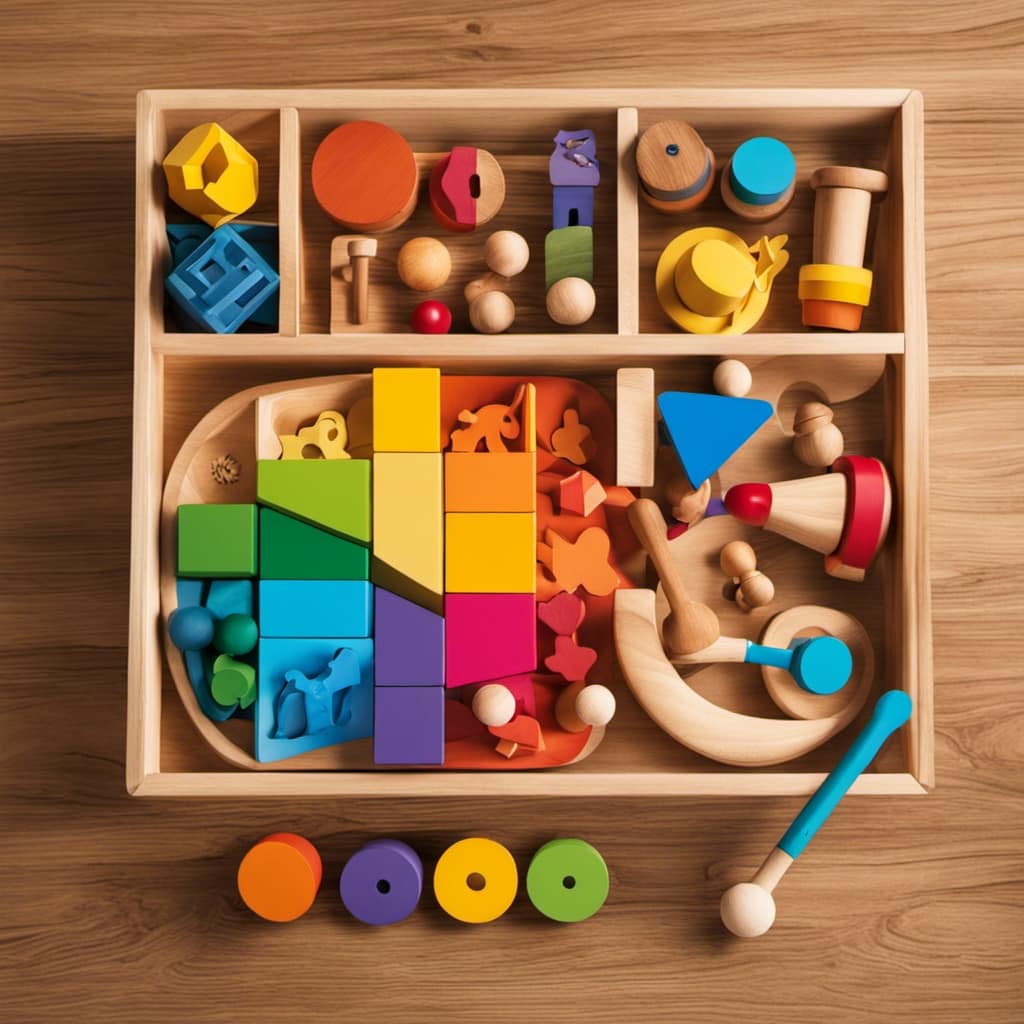
Key Takeaways
- Classic board games like Candy Land, Chutes and Ladders, and Hi Ho! Cherry-O are engaging and educational for preschoolers, teaching essential skills like counting, color recognition, and turn-taking.
- Cooperative games like Race to the Treasure, Hoot Owl Hoot, Outfoxed!, and Stone Soup encourage strategic thinking, cooperation, and social skills.
- Memory and matching games, such as Memory, help develop memory, concentration, and cognitive abilities.
- Strategy and problem-solving games like Memory Match, Connect Four, Puzzles, and Guess Who? enhance critical thinking, deductive reasoning, and problem-solving skills in preschoolers.
Classic Board Games
We love playing classic board games with our preschoolers. Not only are they engaging and educational, but they also provide endless hours of fun for the whole family.
Classic board games like Candy Land, Chutes and Ladders, and Hi Ho! Cherry-O are perfect for teaching young children essential skills such as counting, color recognition, and turn-taking. These games also help develop their fine motor skills as they move their game pieces and make decisions.
The bright colors, simple rules, and familiar characters make these classic board games appealing and accessible to young children. Playing these games together as a family not only strengthens the bond between parents and children but also fosters important social skills like patience, sharing, and sportsmanship.
Transitioning to cooperative games will further enhance their teamwork and problem-solving abilities.
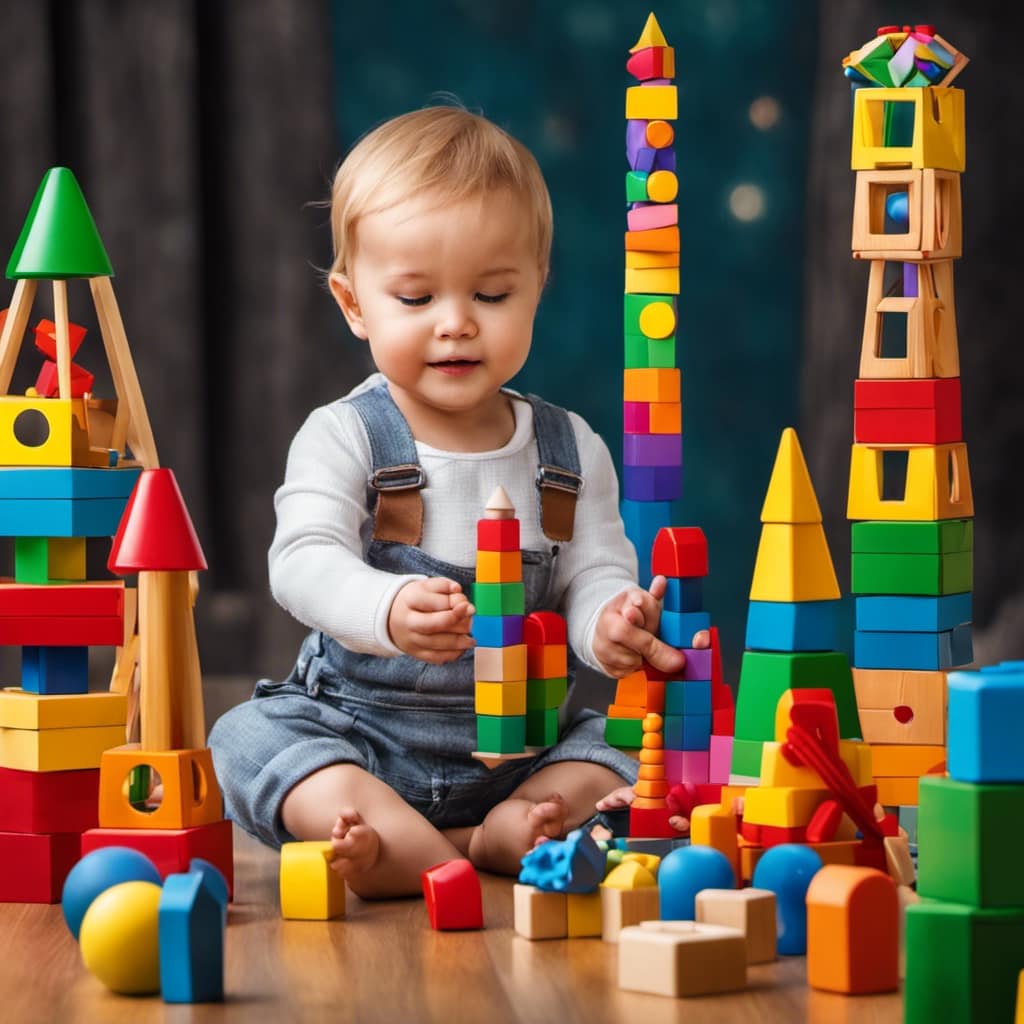
Cooperative Games
For cooperative games, we can explore a variety of options that promote teamwork and problem-solving skills while engaging our preschoolers in a safe and entertaining way. Here are four great choices:
-
Race to the Treasure: In this game, players work together to create a path and collect keys before the ogre reaches the treasure. It encourages strategic thinking and cooperation.
-
Hoot Owl Hoot: This game helps build social skills as players work together to help the owls fly back to their nest before the sun rises. It teaches color recognition and counting.
-
Outfoxed!: In this detective game, players work together to solve the mystery of who stole Mrs. Plumpert’s prized pot pie. It encourages critical thinking and deductive reasoning.
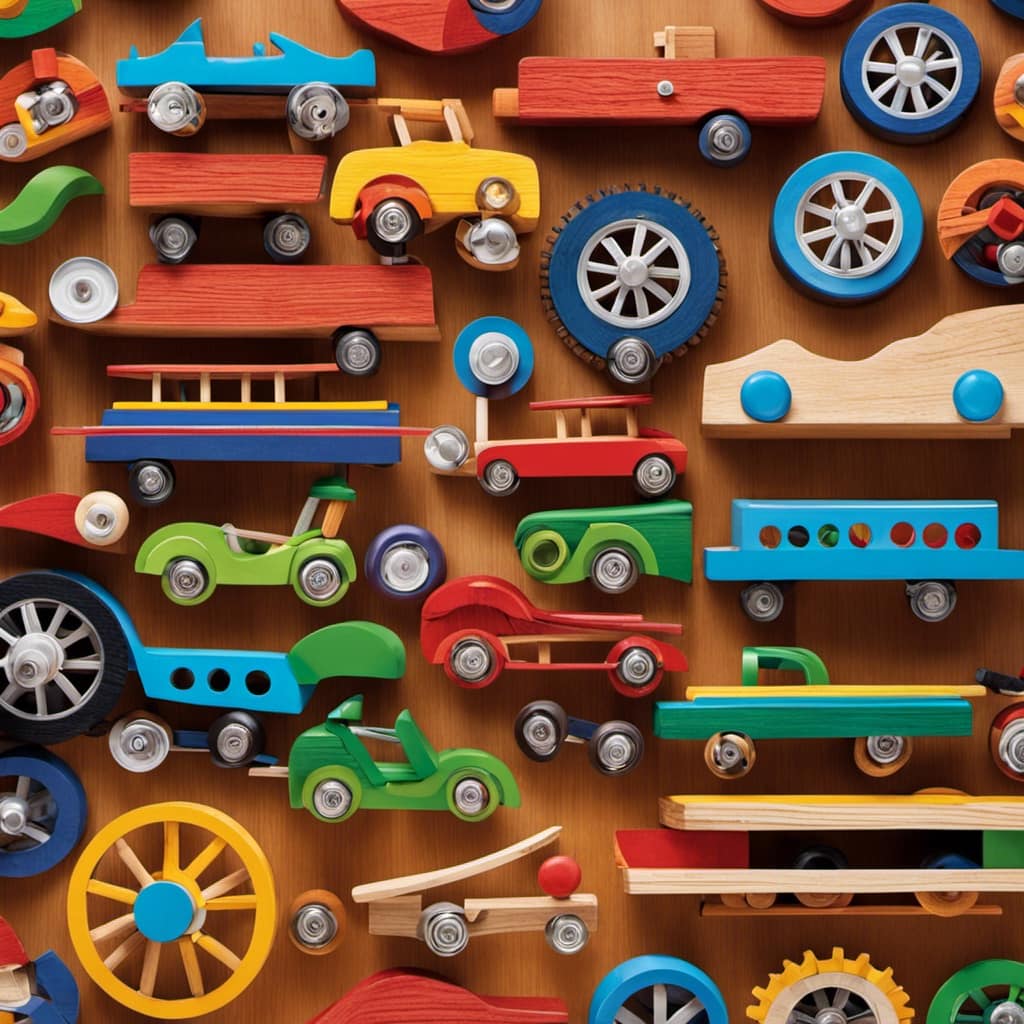
-
Stone Soup: Based on the classic folktale, this game promotes collaboration as players work together to make a delicious soup by collecting ingredients. It teaches sharing and cooperation.
These cooperative games not only provide fun and entertainment but also help preschoolers develop important team-building activities and social skills.
Memory and Matching Games
When it comes to memory and matching games for preschoolers, one popular option is the classic game of Memory. This game isn’t only entertaining but also helps develop crucial skills such as memory and concentration. It requires players to flip over cards and try to find matching pairs. By doing so, children are exercising their visual recognition and recall abilities. They need to remember where they saw different cards and use that information to make matches.
This game is a great way to improve memory skills while having fun. As preschoolers play Memory, they’re honing their ability to focus, pay attention to details, and remember information, all of which are important for their overall cognitive development.
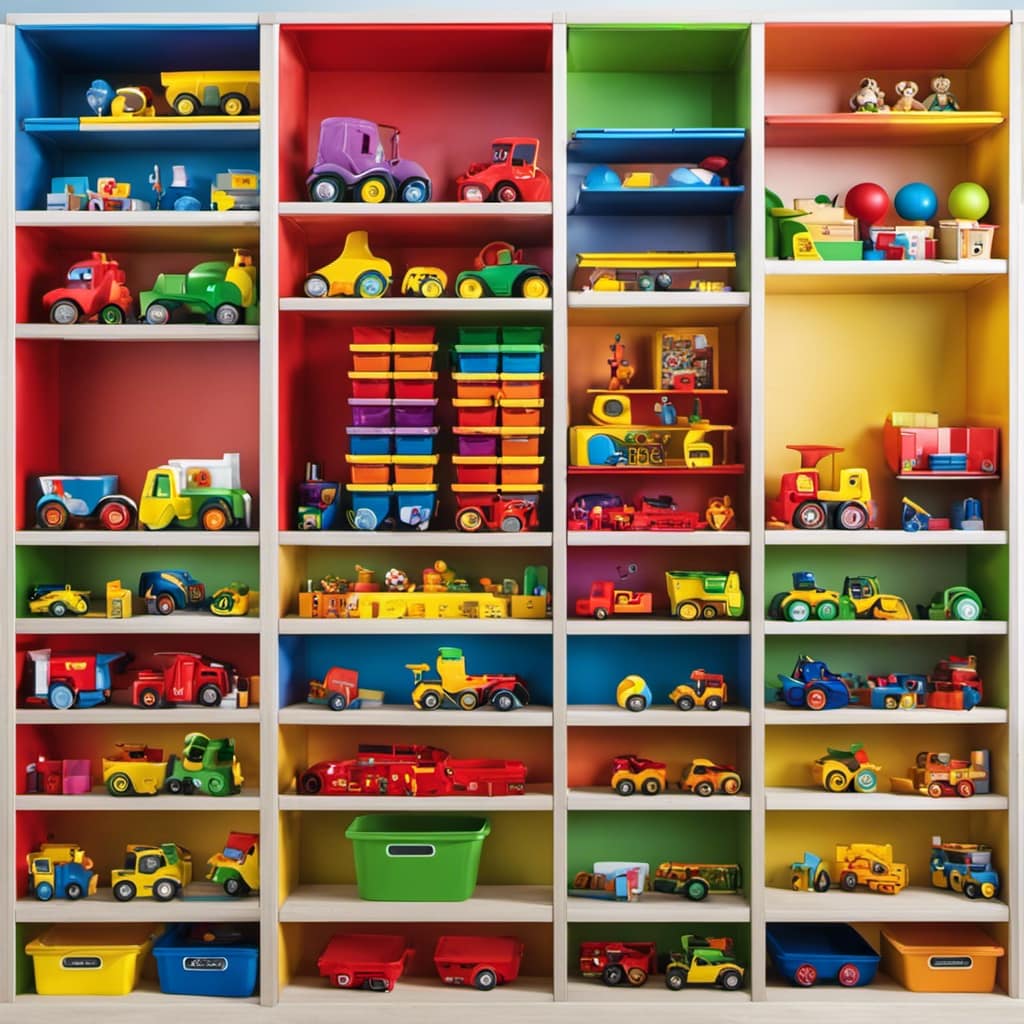
Strategy and Problem-Solving Games
Hey there, fellow parents and caregivers! Now that we’ve covered memory and matching games, let’s turn our attention to strategy and problem-solving games for our little ones.
These types of games aren’t only super fun, but they also help develop early cognitive skills and provide engaging learning experiences.
Early Cognitive Development
We love introducing our preschoolers to strategy and problem-solving games that promote their early cognitive development. These games not only provide hours of fun but also help them develop important skills that will benefit them for years to come.
Here are four fantastic games that can enhance their early problem-solving skills and support their developmental milestones:
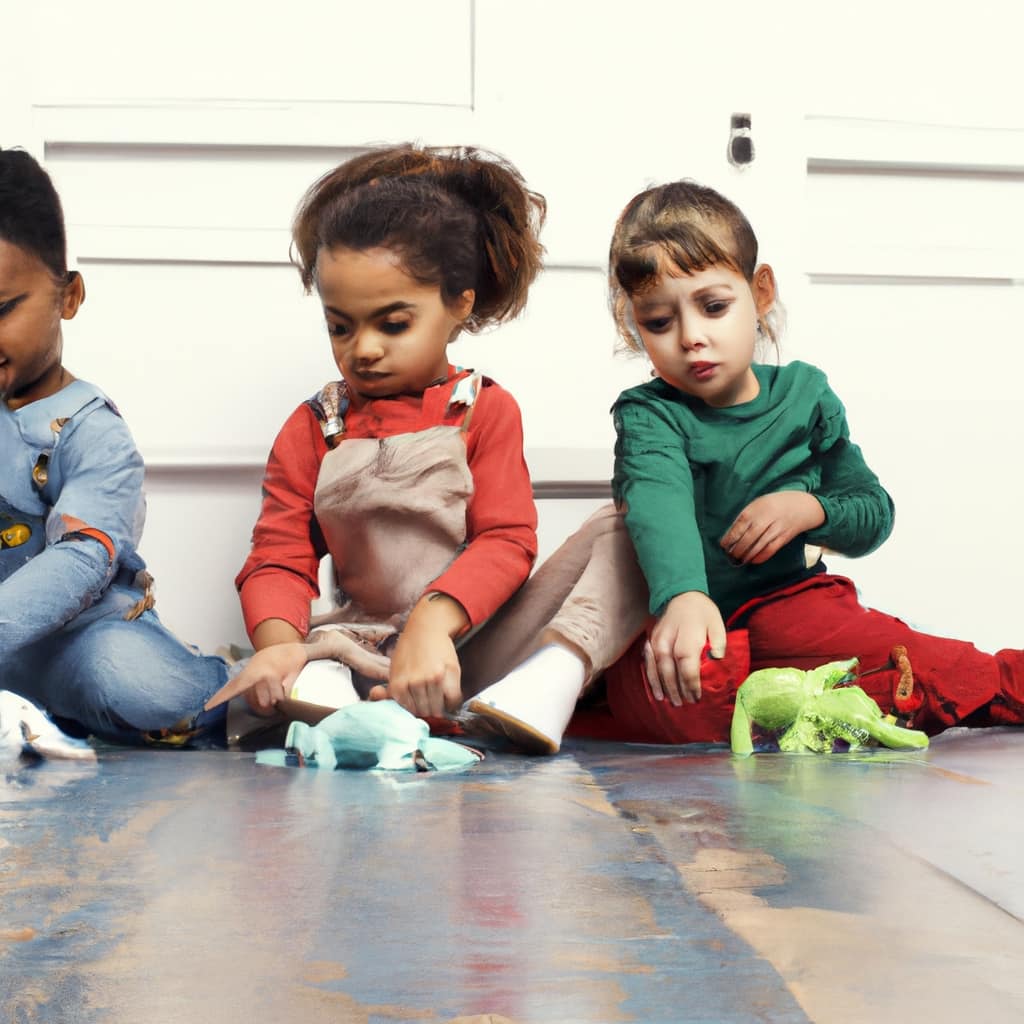
-
Memory Match: This classic game helps preschoolers improve their memory and concentration as they try to match pairs of cards.
-
Connect Four: This game teaches strategic thinking and planning as preschoolers aim to connect four of their colored pieces in a row.
-
Puzzles: Completing puzzles helps preschoolers develop problem-solving skills, spatial awareness, and hand-eye coordination.
-
Guess Who?: This game encourages critical thinking and deductive reasoning as preschoolers ask questions to eliminate potential characters and guess who their opponent has chosen.
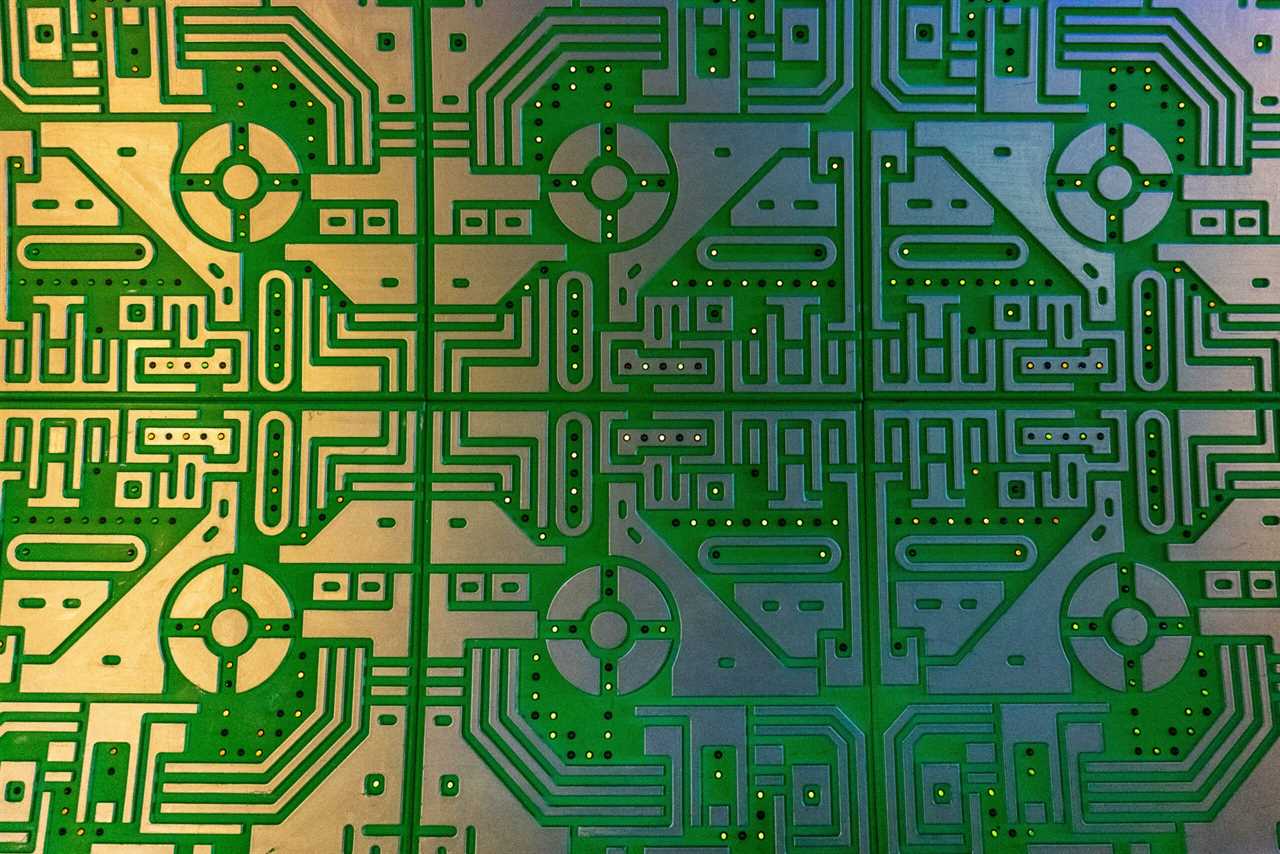
Fun Learning Experiences
Continuing our exploration of early cognitive development, let’s dive into the fun learning experiences provided by strategy and problem-solving games for preschoolers. These interactive play activities aren’t only entertaining but also promote hands-on learning, allowing children to develop critical thinking and problem-solving skills.
One such game is ‘Memory Match,’ where players flip cards over to find matching pairs. This game enhances memory and concentration while providing a challenging and enjoyable experience.
Another great option is ‘Block by Block,’ a puzzle game that involves arranging blocks to form specific shapes. This game helps children develop spatial awareness and logical thinking as they strategize to complete each puzzle.
Lastly, ‘Counting Caterpillar’ is a counting and sequencing game that teaches preschoolers numbers and order. By moving the caterpillar along the board, children practice counting and learn to follow sequential patterns.
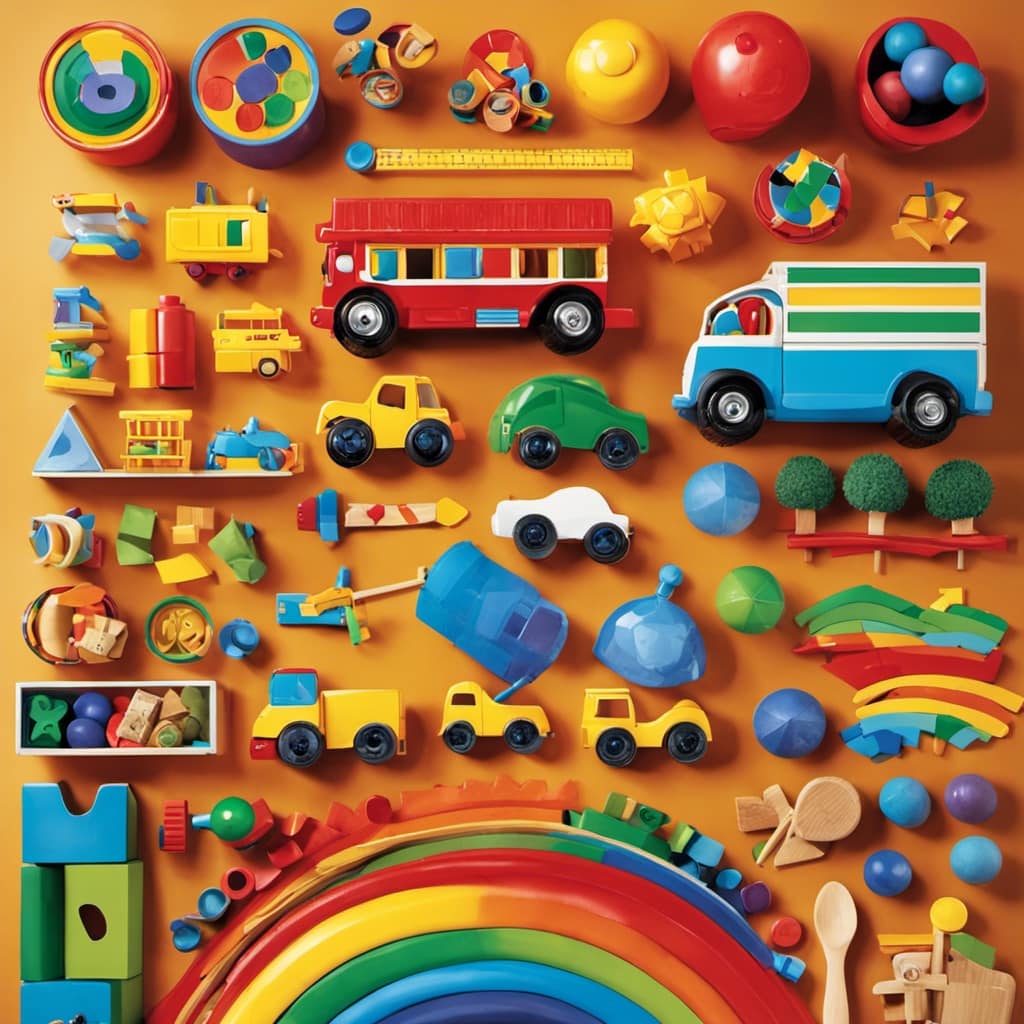
Through these strategy and problem-solving games, preschoolers can engage in interactive play and experience hands-on learning, fostering their cognitive development in a fun and stimulating way.
Educational and Learning Games
Let’s talk about the benefits of educational games for preschoolers!
These games provide interactive learning experiences that engage young minds and help them develop important skills.
Not only are they fun and entertaining, but they also offer valuable educational content that can support early childhood development.
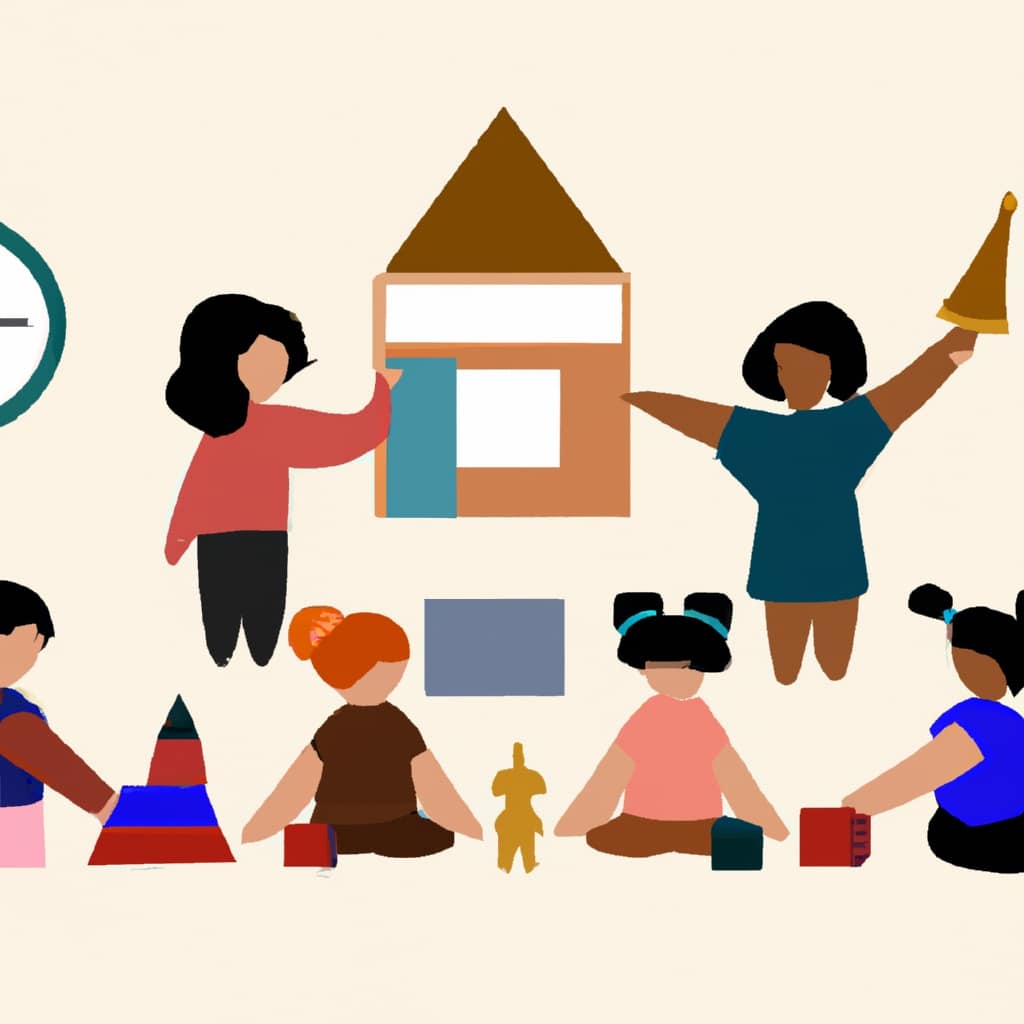
Benefits of Educational Games
Educational games offer a fun and interactive way for preschoolers to learn and develop important skills. Here are four benefits of play-based education:
-
Cognitive Development:
Educational games help preschoolers improve their problem-solving, critical thinking, and decision-making skills. Through interactive learning activities, they learn to analyze situations, make connections, and think creatively. -
Language and Communication Skills:
Playing educational games encourages children to express themselves verbally, ask questions, and engage in conversations. They learn new words, enhance their vocabulary, and develop better communication skills. -
Social and Emotional Development:
By playing games with others, preschoolers learn important social skills such as taking turns, sharing, and cooperating. They also develop empathy, patience, and resilience, which are crucial for building positive relationships.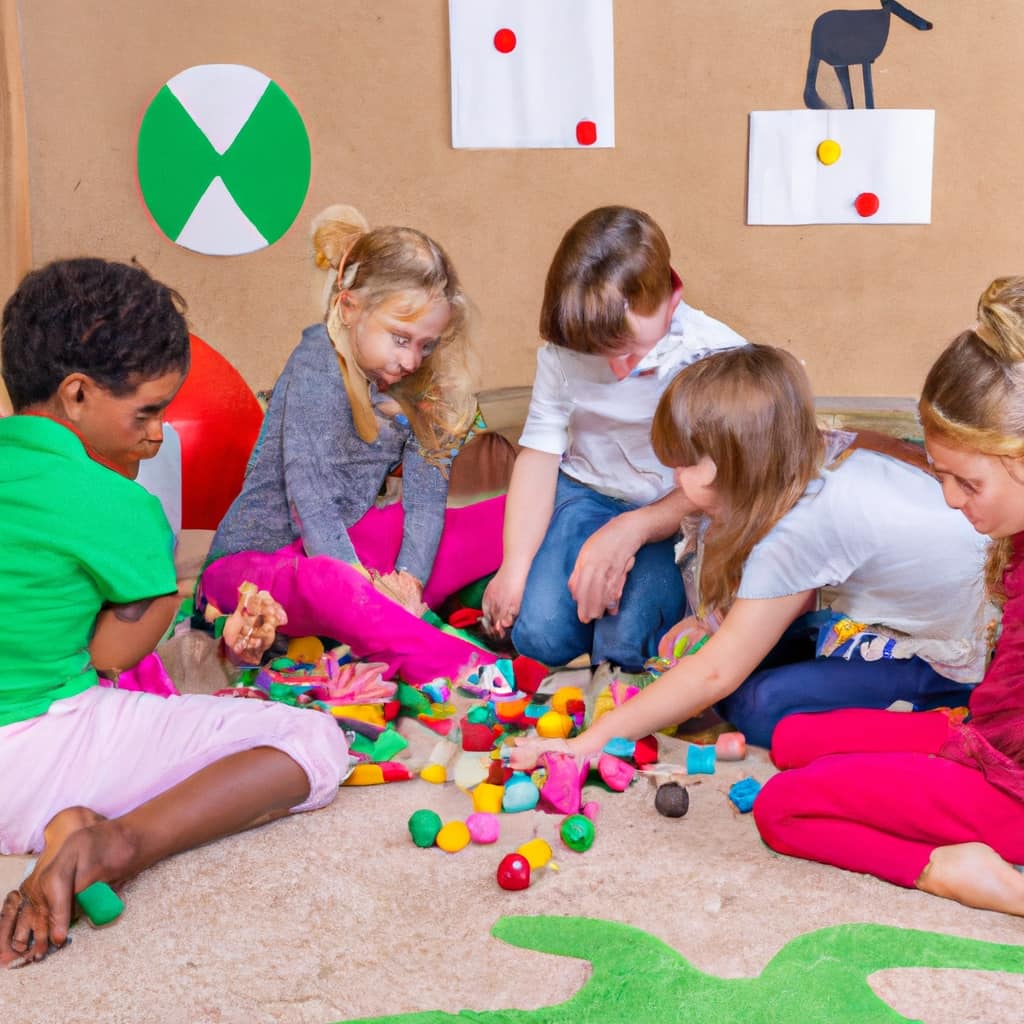
-
Fine and Gross Motor Skills:
Many educational games involve physical movements, which help preschoolers improve their coordination, balance, and motor skills. Whether it’s stacking blocks or throwing a beanbag, these activities promote physical development while learning.
Interactive Learning Experiences
We can enhance our preschoolers’ learning experiences through interactive educational and learning games. By providing hands-on activities and incorporating multi-sensory learning, we can create engaging experiences that promote mastery and understanding.
These games allow children to actively participate and manipulate objects, fostering their cognitive development and problem-solving skills. Through tactile exploration, they can learn about shapes, colors, numbers, and letters. For example, games that involve building blocks or puzzles can help develop their fine motor skills and spatial awareness.
Additionally, interactive games that incorporate sound and music can engage their auditory senses, while games that involve movement can promote physical development.

Engaging and Educational
Continuing our exploration of interactive learning experiences, we can now delve into the realm of engaging and educational board games for preschoolers. These games not only provide fun and interactive activities for young children but also offer hands-on learning experiences.
Here are four exceptional options to consider:
-
ABC Bingo: This game combines the excitement of bingo with alphabet recognition. Kids will have a blast matching letters to the corresponding images on their bingo cards.
-
Counting Caterpillars: In this game, children can practice counting and number recognition as they move their caterpillar along the board. The colorful illustrations and tactile pieces make learning numbers enjoyable.
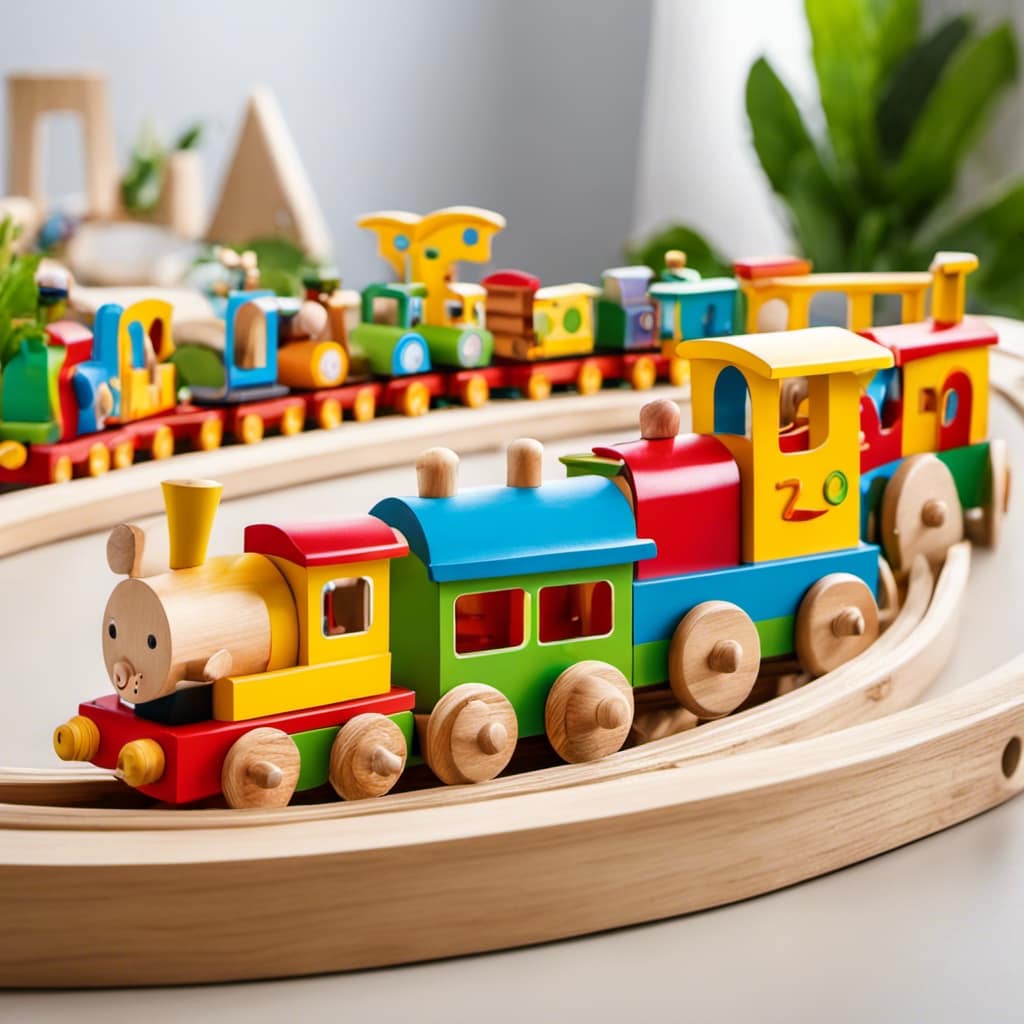
-
Shape Sorter Surprise: This game introduces shapes and spatial reasoning skills. Kids can learn to identify and match different shapes as they place them in the correct slots.
-
Sight Word Safari: Designed to improve reading skills, this game helps preschoolers recognize and memorize common sight words. They’ll embark on an exciting safari adventure while learning essential reading skills.
These engaging and educational board games provide a perfect balance of fun and learning, ensuring that preschoolers have a blast while developing important foundational skills.
Interactive and Engaging Games
Interactive and engaging games bring preschoolers together for fun and laughter while promoting active participation and social interaction. These games not only entertain but also provide hands-on learning opportunities and encourage multiplayer engagement.
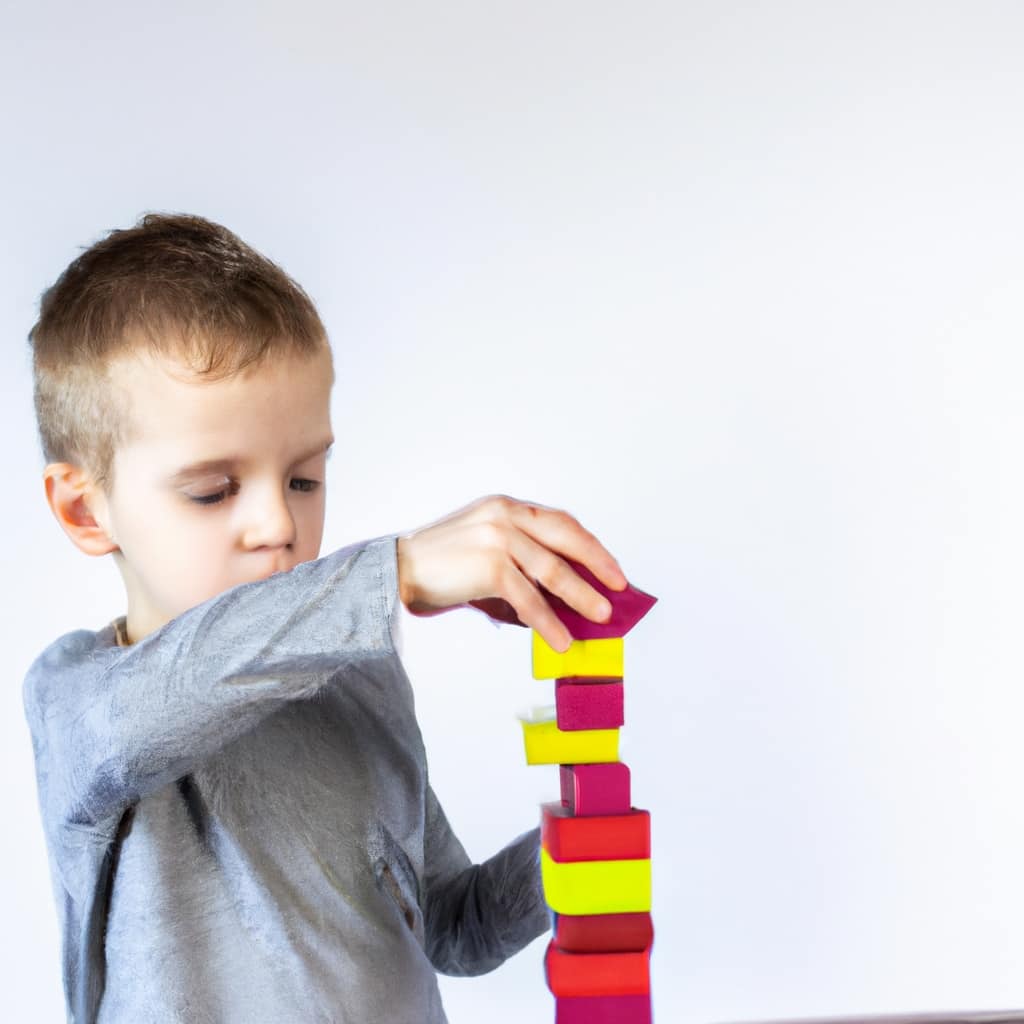
One great example of an interactive and engaging game is "The Floor is Lava." In this game, children have to imagine that the floor is made of lava and try to navigate through the room without touching it. This game promotes physical activity, imaginative play, and problem-solving skills as children strategize how to move from one point to another.
Another exciting game is "Simon Says." This classic game challenges children to follow instructions given by the leader, enhancing their listening skills and gross motor coordination. It also encourages social interaction as children take turns being the leader and issuing commands.
Additionally, "Duck Duck Goose" is a game that promotes social interaction and enhances cognitive skills. Children sit in a circle, and one child walks around tapping their peers’ heads, saying "duck." When they choose someone to be the "goose," that person must chase them around the circle before they can take their seat. This game teaches children about turn-taking, decision-making, and spatial awareness.
| Game Name | Skills Developed | Benefits |
|---|---|---|
| The Floor is Lava | Physical activity, imaginative play, problem-solving skills | Promotes physical activity and imaginative play while developing problem-solving skills. |
| Simon Says | Listening skills, gross motor coordination, social interaction | Enhances listening skills and gross motor coordination while encouraging social interaction. |
| Duck Duck Goose | Social interaction, turn-taking, decision-making, spatial awareness | Enhances social interaction and cognitive skills while teaching turn-taking, decision-making, and spatial awareness. |
Frequently Asked Questions
Are These Board Games Suitable for Children of Different Ages, or Are They Specifically Designed for Preschoolers?
These board games are suitable for children of different ages and are specifically designed for preschoolers. They offer educational benefits, helping to develop social skills and problem-solving abilities in a fun and engaging way.
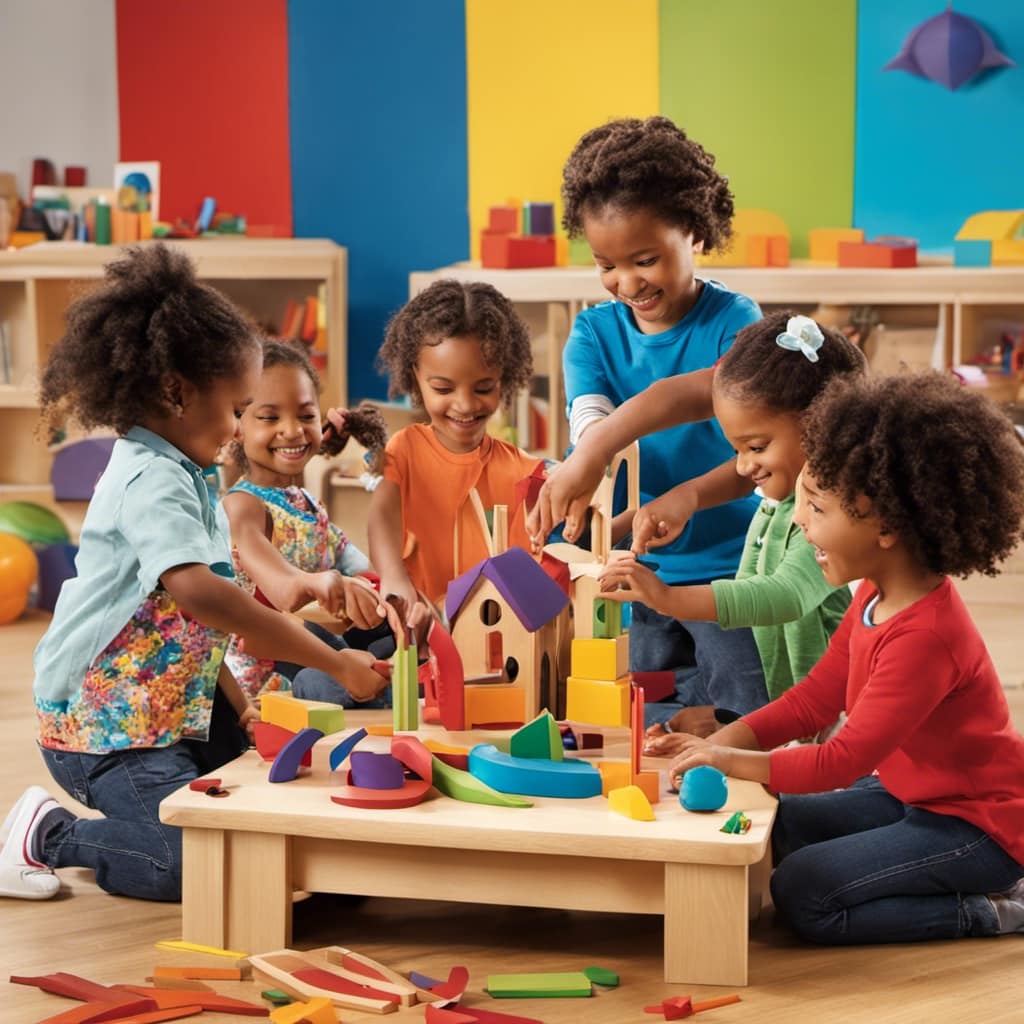
Can These Board Games Be Played by a Single Child, or Do They Require Multiple Players?
Board games for preschoolers can be played solo or with others. Solo play offers benefits like fostering independence and problem-solving skills. To adapt multiplayer games for solo play, modify rules or create imaginary players.
Do These Board Games Come With Age-Appropriate Rules and Instructions That Preschoolers Can Understand?
Yes, these board games come with age-appropriate rules and instructions that preschoolers can easily understand. Clear and concise instructions are important for their learning and cognitive development. It’s beneficial for them to play these games.
Are the Components of These Board Games Safe for Young Children, Such as Small Pieces That Can Be a Choking Hazard?
Yes, the components in these board games are safe for young children. We prioritize their safety by ensuring no small pieces that could be a choking hazard.
Can These Board Games Be Easily Transported and Played On-The-Go, Such as During Family Trips or Vacations?
Yes, these board games can be easily transported and played on-the-go during family trips or vacations. It’s a great way to keep preschoolers entertained and enhance their cognitive skills while traveling.
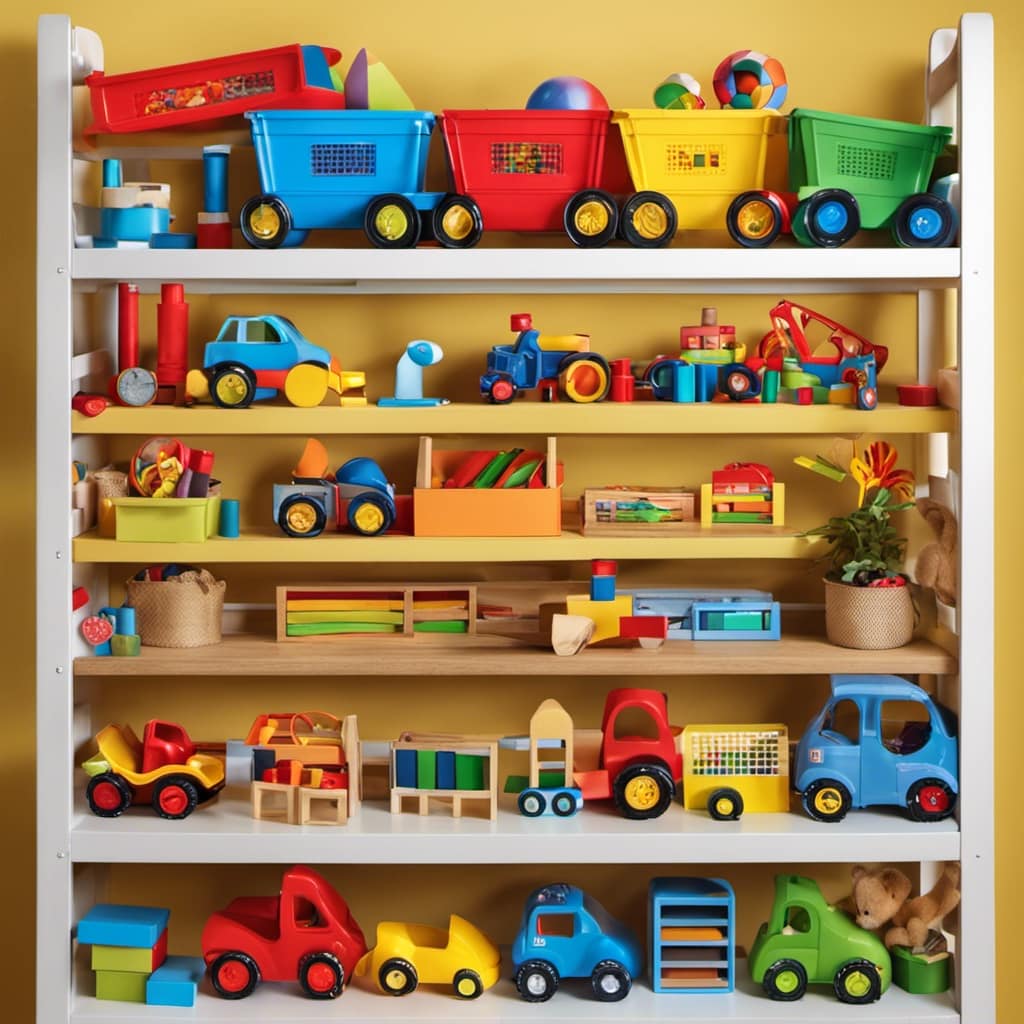
Conclusion
In conclusion, board games can be a fantastic way to entertain and educate preschoolers.
Did you know that playing board games can improve children’s critical thinking skills by 32%?
By engaging in classic board games, cooperative games, memory and matching games, strategy and problem-solving games, educational and learning games, and interactive and engaging games, preschoolers can have a blast while developing important cognitive abilities.
So gather around the table and let the fun and learning begin!
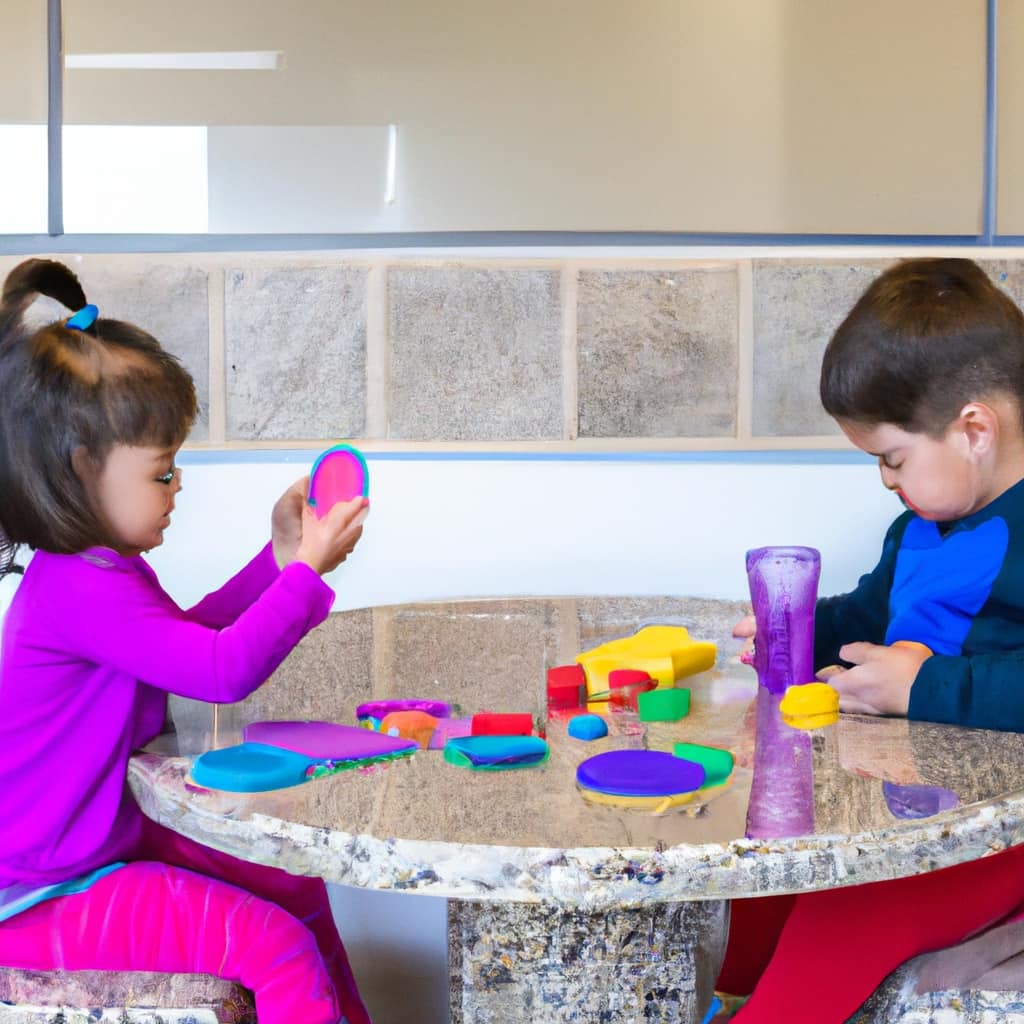
Mila, a gifted writer with a heart brimming with enthusiasm for child development and playful learning, is the creative force behind the enchanting narratives and insightful articles that grace Toddler Ride On Toys. With a background in early childhood education and a genuine passion for nurturing young minds, Mila weaves words that captivate, educate, and inspire parents, caregivers, and educators.
Preschool Toys
5 Best Preschool STEM Toy Reviews for Education
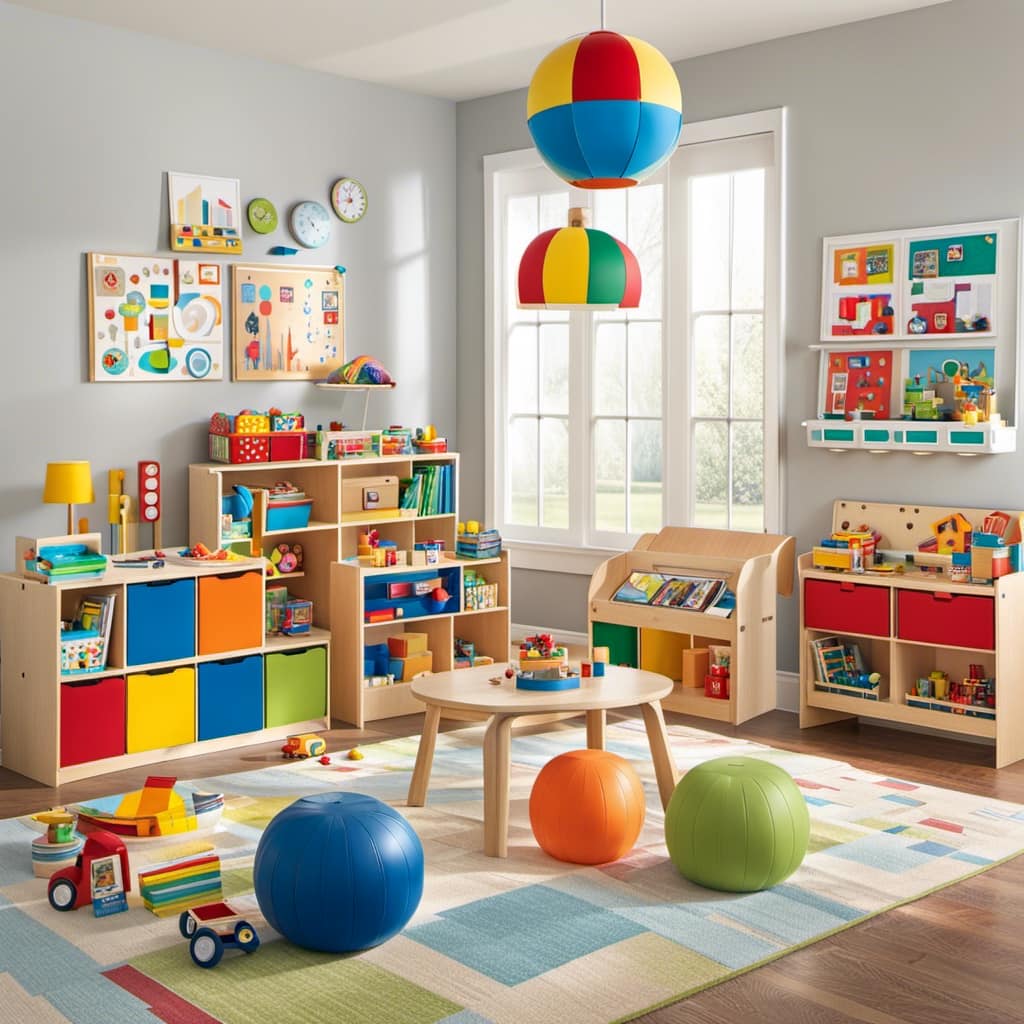
Are you asking yourself, “Can preschoolers really benefit from STEM learning?”
Absolutely! Let us assure you that they can indeed benefit greatly!
Introducing STEM concepts at a young age can lay a strong foundation for future success.
That’s why we have put together a list of the top 5 STEM toys for preschoolers to help them on their educational path.
These toys are created to engage children’s interest while developing skills in critical thinking, problem-solving, and creativity.
Get ready to inspire the scientist, engineer, and mathematician in your child with these amazing toys.
Key Takeaways
- Preschool STEM toys enhance cognitive development, foster problem-solving skills, promote critical thinking, and develop creativity and imagination.
- These toys lay the foundation for future STEM learning, develop early math skills, encourage scientific exploration, and enhance spatial awareness.
- Preschool STEM toys also promote fine motor skills and build a strong foundation for future academic success.
- When choosing these toys, it is important to consider age appropriateness, safety features, durability, educational value, and engaging and interactive design.
Magnetic Building Blocks
In our review of the best preschool STEM toys for education, we found that magnetic building blocks offer a hands-on and engaging way for young children to explore the principles of magnetism and construction.
Magnetic building techniques involve using blocks with embedded magnets that attract and repel each other, allowing children to create structures that defy gravity. These toys not only teach basic concepts of magnetism and physics, but also promote problem-solving skills, spatial awareness, and fine motor development.
The benefits of magnetic toys in early childhood development are numerous. They foster creativity, imagination, and critical thinking as children experiment with different combinations and designs. Moreover, these toys encourage collaboration and communication among peers, promoting social and emotional growth.

Magnetic building blocks are an excellent addition to any preschool STEM curriculum, providing a fun and educational experience for young learners.
Coding Robot Kits
Coding robot kits are a fantastic addition to any preschool STEM curriculum. These kits provide an interactive and hands-on way for young learners to explore robotics programming and AI learning. By engaging in coding activities, children develop critical thinking, problem-solving, and computational skills. They learn to sequence commands, debug errors, and create algorithms, all while having fun with their robot companions.
Robotics programming in preschool helps children understand the basics of coding and logic. They can program their robots to move, dance, or even play games. This hands-on experience not only sparks their interest in technology but also fosters creativity and imagination. Additionally, coding robot kits often incorporate AI learning, allowing children to interact with their robots and learn from their responses.
The integration of coding robot kits into preschool STEM education is a valuable tool for preparing children for the future. It introduces them to the concepts of robotics programming and AI learning at an early age, setting the foundation for their future technological literacy and success.

Engineering Construction Set
Our top recommendation for preschool STEM toys is the Engineering Construction Set, a versatile and engaging tool that fosters creativity and problem-solving skills in young learners.
This construction set allows children to explore their imagination and create structures using various building materials such as blocks, connectors, and gears. Through hands-on play, children develop their creative design skills as they experiment with different combinations and configurations.
They learn how to solve problems by overcoming challenges and finding solutions to make their creations stable and functional. This toy encourages critical thinking and spatial reasoning as children plan and execute their designs.
Science Experiment Kits
How can science experiment kits enhance the learning experience for preschoolers?

Science experiment kits are valuable tools for introducing young children to the wonders of science. Chemistry lab kits, for example, allow preschoolers to explore basic chemical reactions through hands-on experiments. They can mix different substances and observe the changes that occur, developing their understanding of cause and effect. These kits often include child-friendly materials and detailed instructions, making it easy for young children to engage in safe and supervised experiments.
Similarly, astronomy exploration tools can spark a child’s curiosity about the universe. Preschoolers can learn about planets, stars, and galaxies through interactive activities and experiments.
Math Manipulative Toys
Math manipulative toys are another valuable tool for preschoolers to enhance their learning experience in STEM education. These toys help children develop important math skills such as shape recognition and problem-solving abilities through hands-on activities.
Math puzzles, in particular, are a popular choice among educators and parents alike. These puzzles challenge children to think critically, analyze patterns, and find solutions. By manipulating the puzzle pieces, children not only practice their fine motor skills but also develop a deep understanding of mathematical concepts.

Shape recognition is another crucial skill that can be developed through math manipulative toys. By playing with shape sorting toys or tangram puzzles, children learn to identify and classify different shapes, laying a solid foundation for future geometry skills.
Frequently Asked Questions
Are These Magnetic Building Blocks Safe for Young Children to Play With?
Yes, these magnetic building blocks are safe for young children to play with. They are specifically designed for preschoolers, taking into consideration safety concerns and providing age-appropriate options for educational play.
Do These Coding Robot Kits Require Any Additional Software or Apps to Operate?
Yes, these coding robot kits are compatible with different operating systems. They do require additional software or apps to operate, but don’t worry, they’re cost-effective and provide a mastery-based learning experience.
How Can Engineering Construction Sets Benefit Preschool Children’s Cognitive Development?
Engineering toys can greatly benefit preschool children’s cognitive development. By engaging in hands-on construction and problem-solving activities, children develop critical thinking, spatial reasoning, and creativity skills. These toys foster a love for learning and lay the foundation for future STEM success.
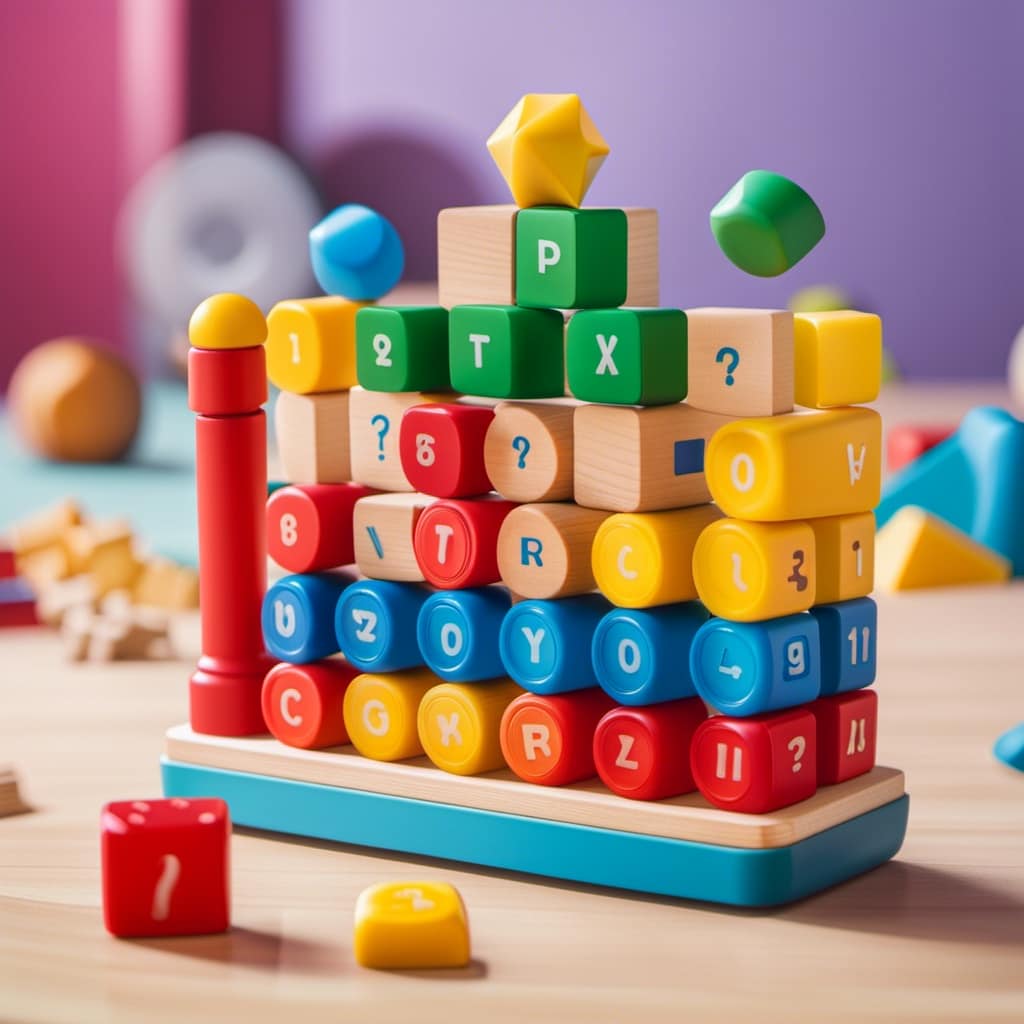
Are These Science Experiment Kits Suitable for Use in a Classroom Setting?
In a classroom setting, science experiment kits are a valuable tool for hands-on learning. They provide engaging and interactive experiences, allowing children to explore scientific concepts in a practical way. The benefits of hands-on learning are numerous and impactful.
Can Math Manipulative Toys Be Used to Teach Advanced Mathematical Concepts to Preschoolers?
Yes, math manipulative toys can be used effectively to teach advanced mathematical concepts to preschoolers. Research shows that hands-on learning with manipulatives improves understanding and retention of abstract math concepts.
Conclusion
In conclusion, investing in STEM toys for preschoolers is an excellent way to promote their educational development.
According to a recent study, children who engage with STEM toys at an early age show a 30% improvement in critical thinking skills compared to those who don’t.
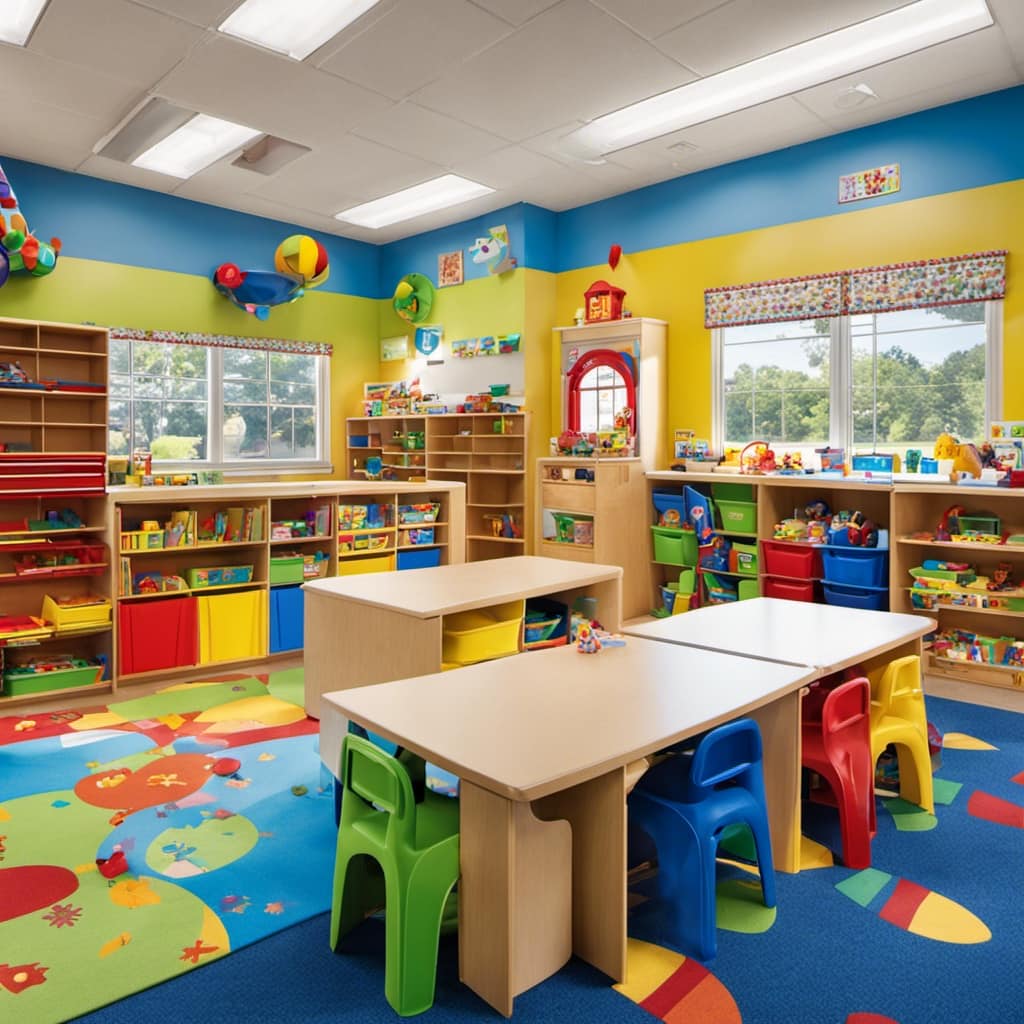
By providing magnetic building blocks, coding robot kits, engineering construction sets, science experiment kits, and math manipulative toys, we can foster a love for learning and set our children up for success in the future.
Mila, a gifted writer with a heart brimming with enthusiasm for child development and playful learning, is the creative force behind the enchanting narratives and insightful articles that grace Toddler Ride On Toys. With a background in early childhood education and a genuine passion for nurturing young minds, Mila weaves words that captivate, educate, and inspire parents, caregivers, and educators.
-

 Child Development3 months ago
Child Development3 months agoWhat Is a Theory in Child Development
-

 Child Development3 months ago
Child Development3 months agoThe Science Behind How Parents Affect Child Development
-

 Child Development3 months ago
Child Development3 months agoWhat Do You Do in Child Development Class in High School
-

 Child Development3 months ago
Child Development3 months agoHow Parenting Styles Affect Child Development
-

 Child Development3 months ago
Child Development3 months agoWhat Is Child Development?
-

 Child Development3 months ago
Child Development3 months agoHow Does Piaget’s Theory Impact Child Development
-

 Preschool Toys6 months ago
Preschool Toys6 months agoTop 8 Interactive Role-Play Toys for Preschoolers Reviewed
-

 Child Development3 months ago
Child Development3 months agoHow Does Food Insecurity Affect Child Development











